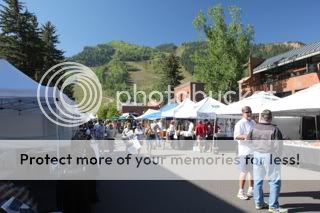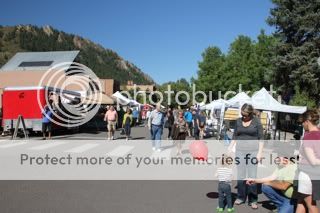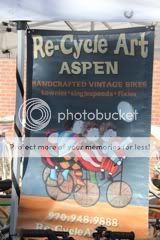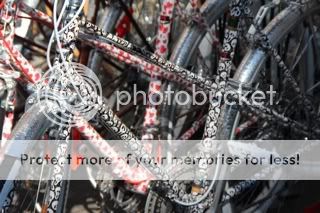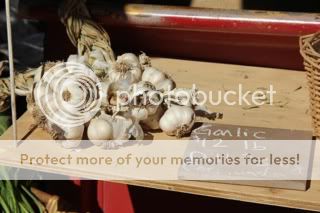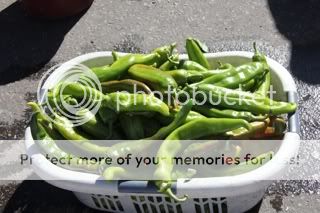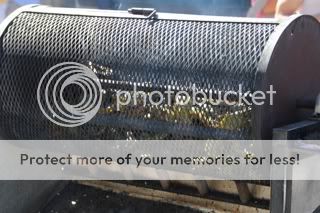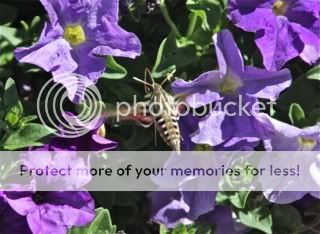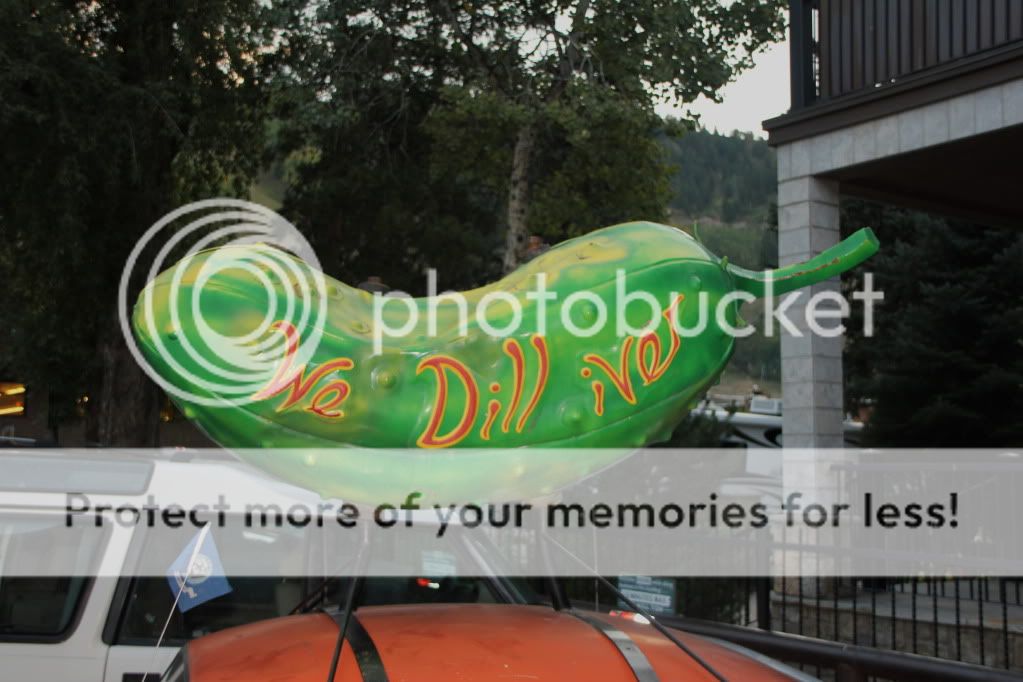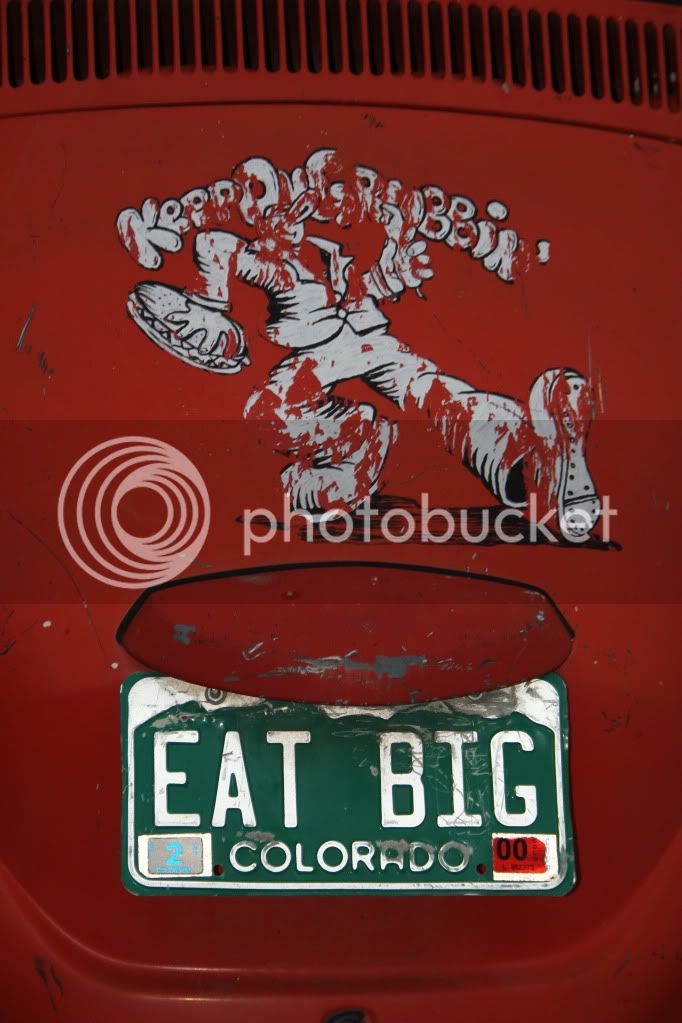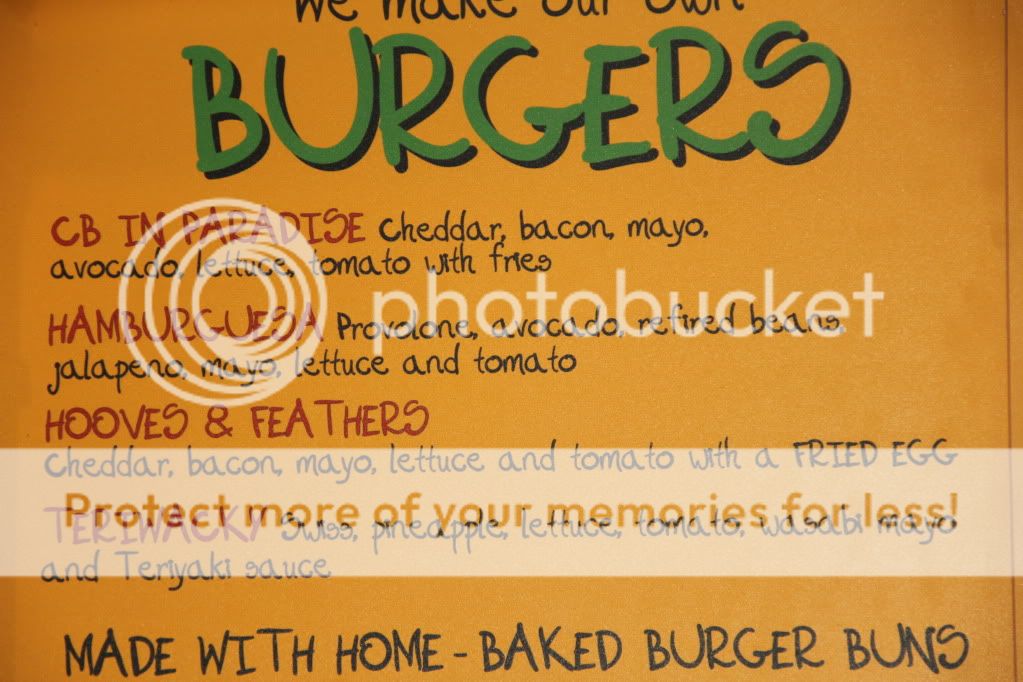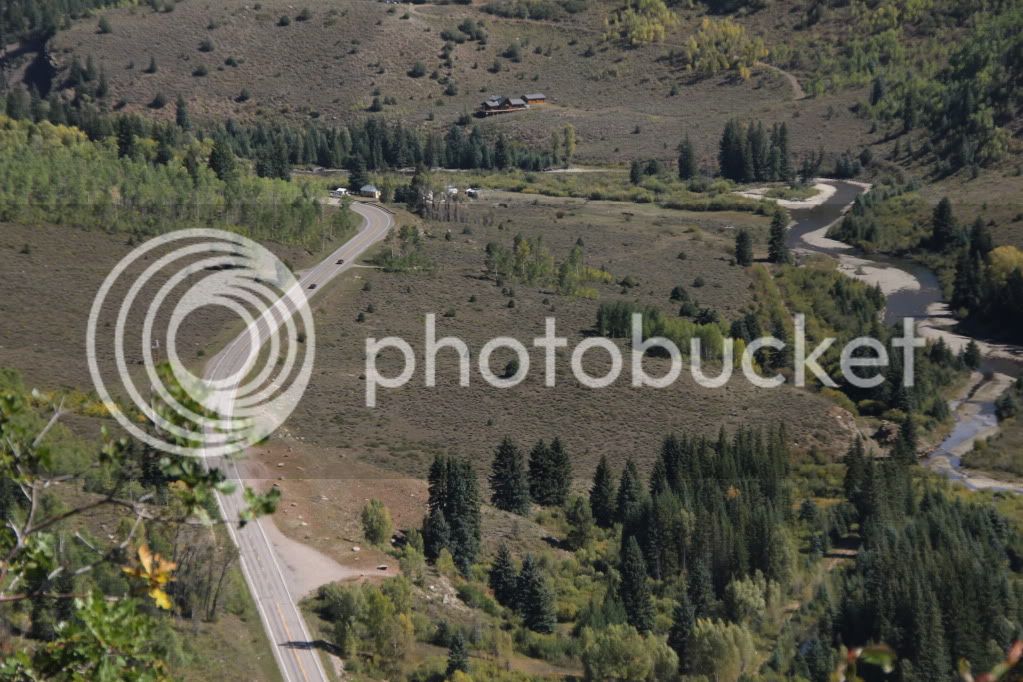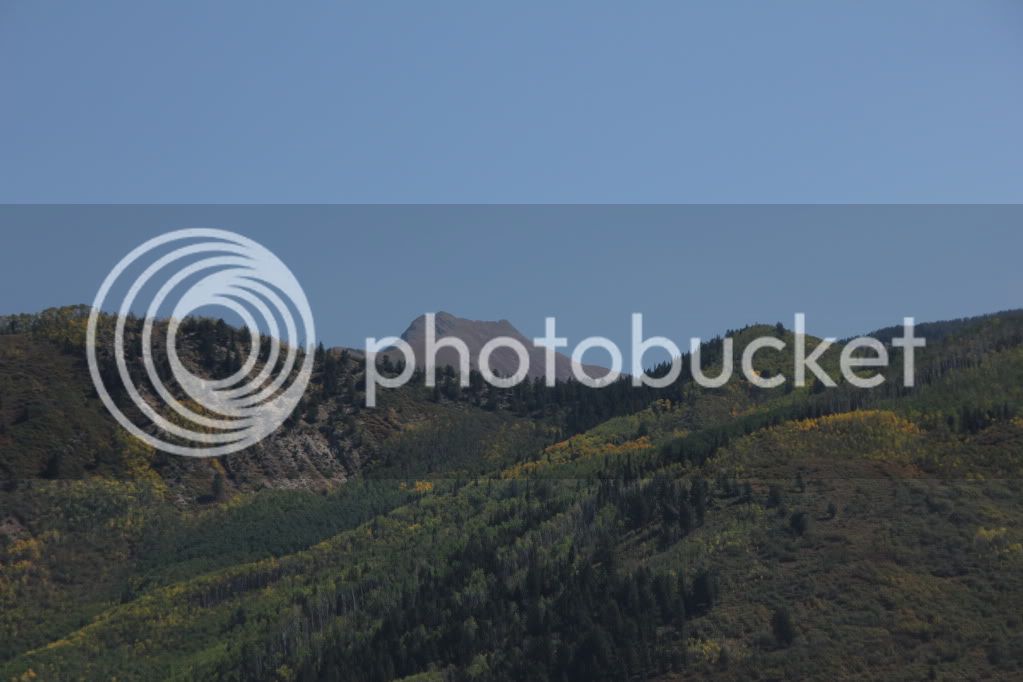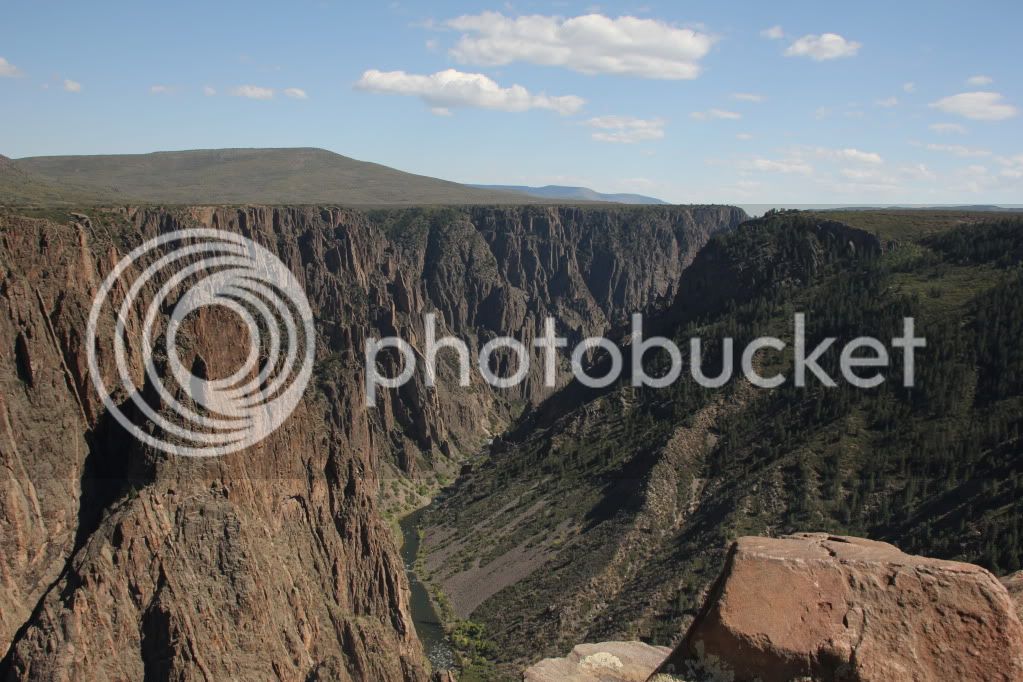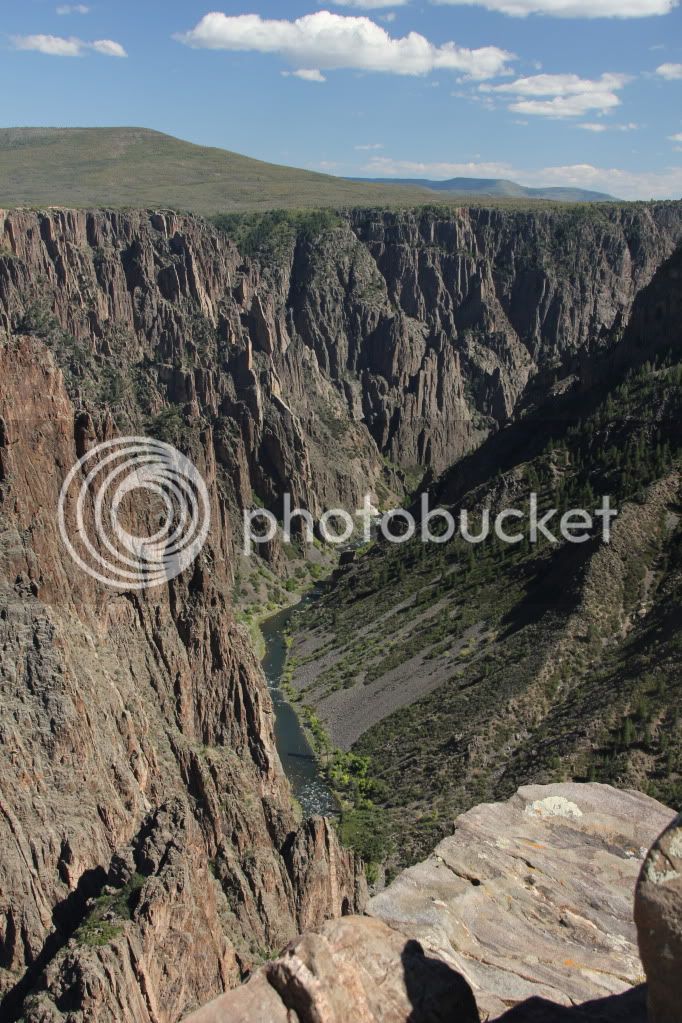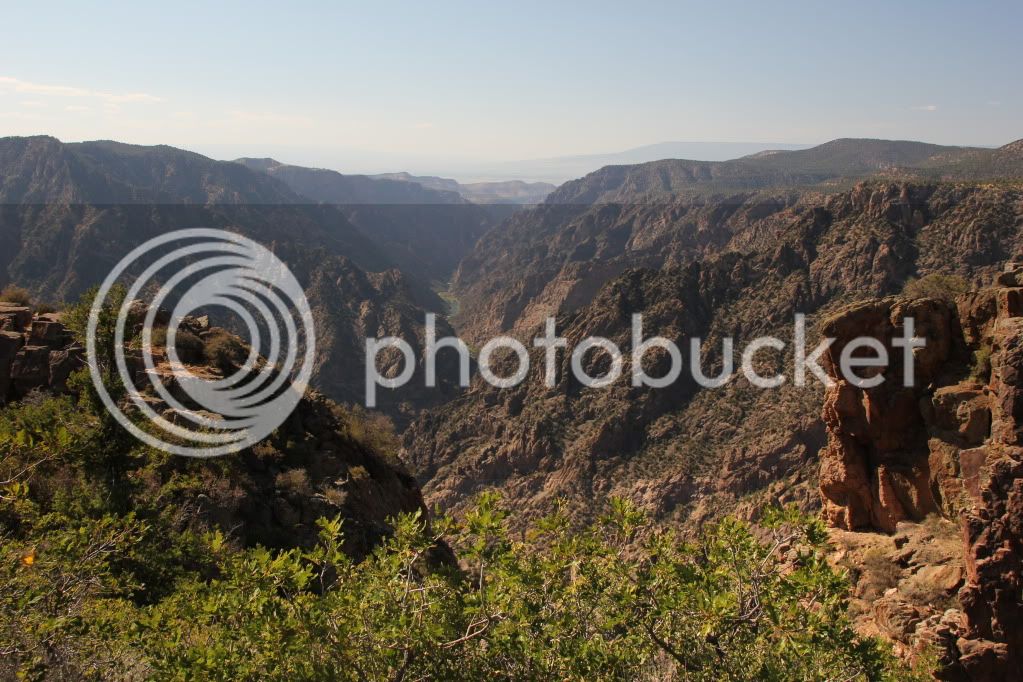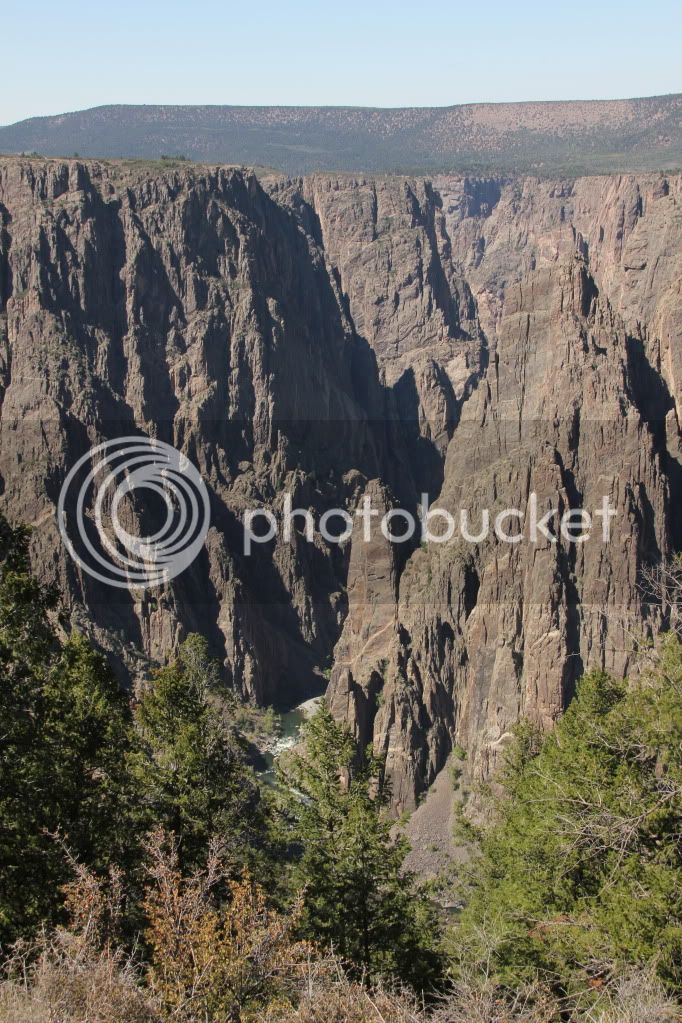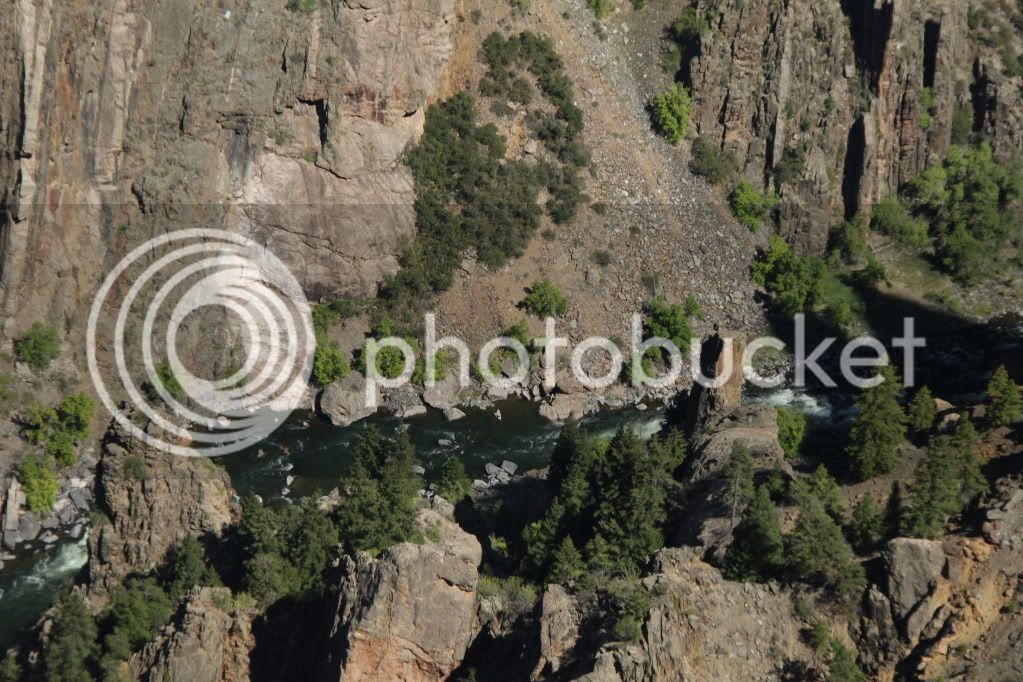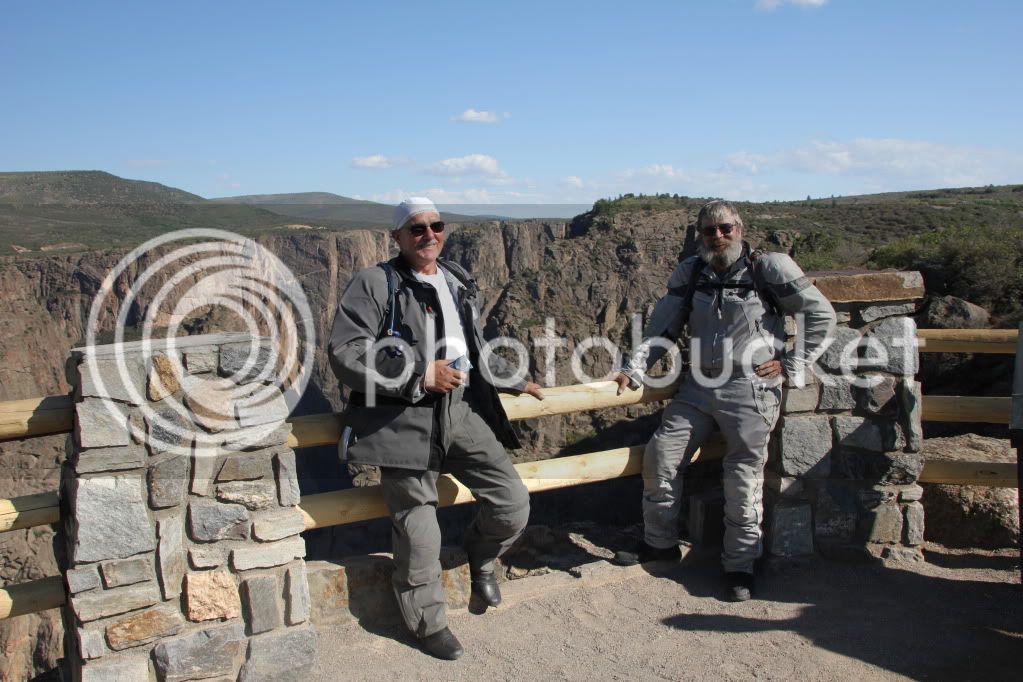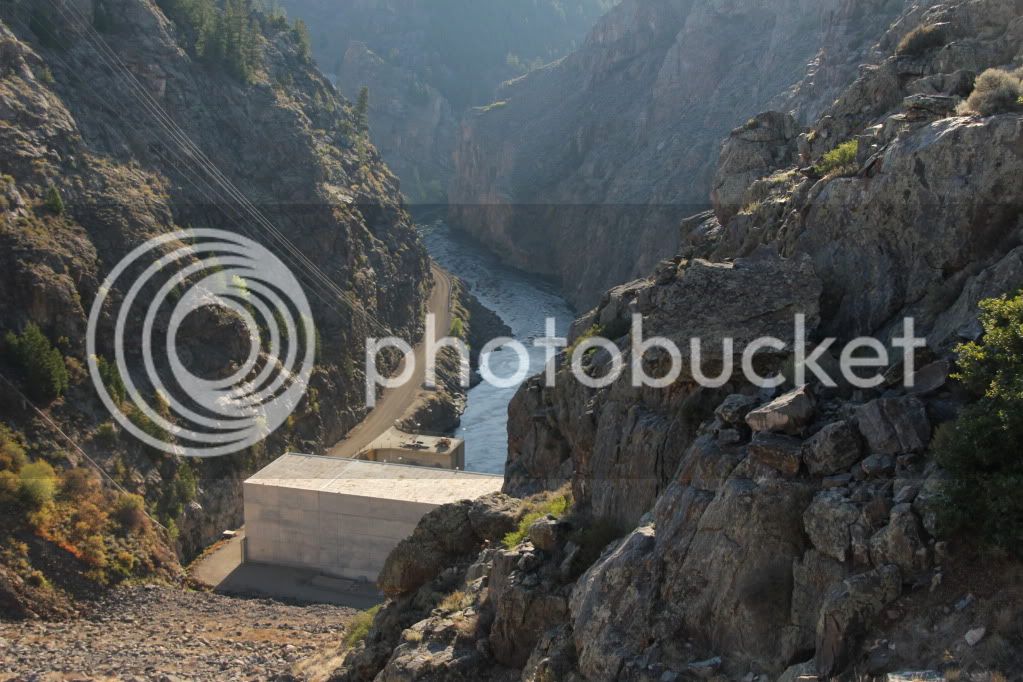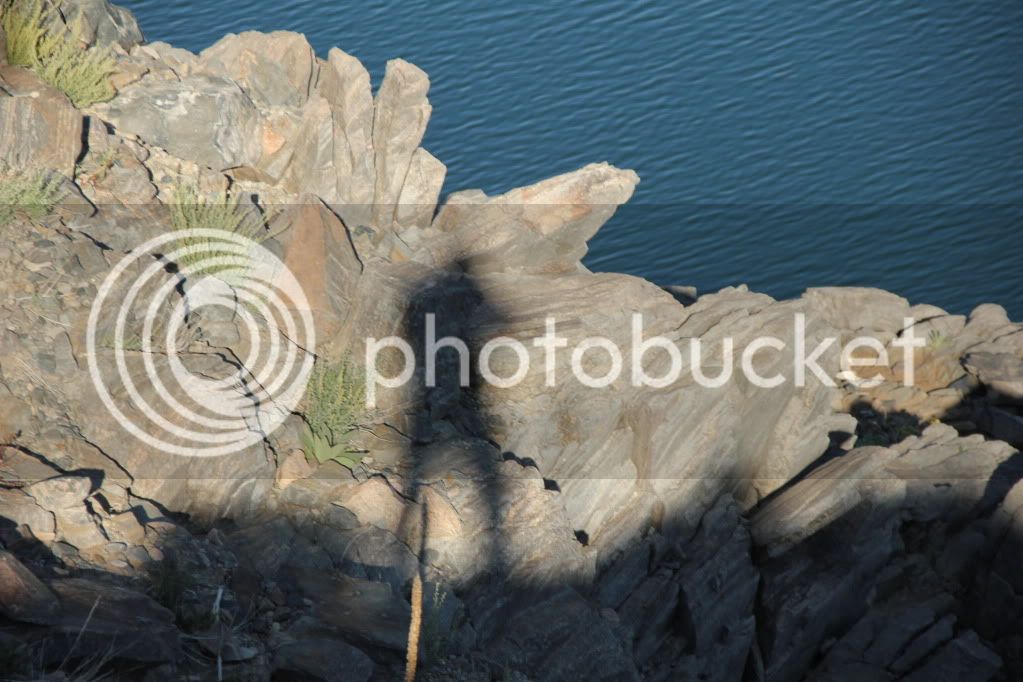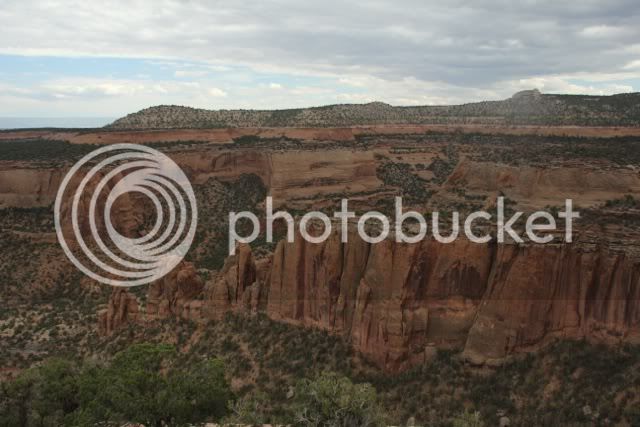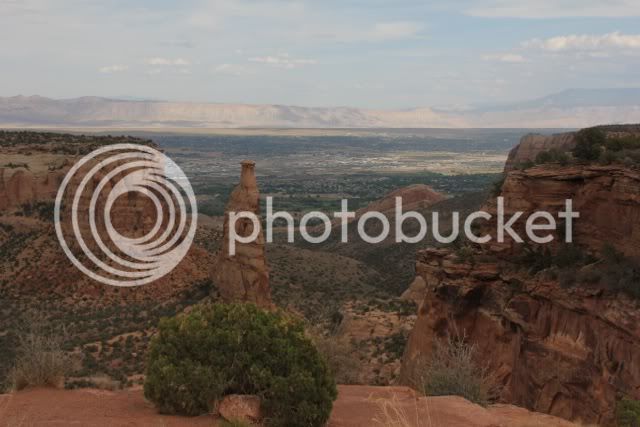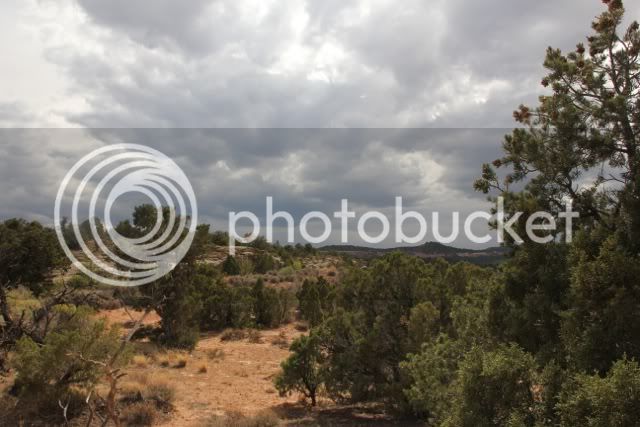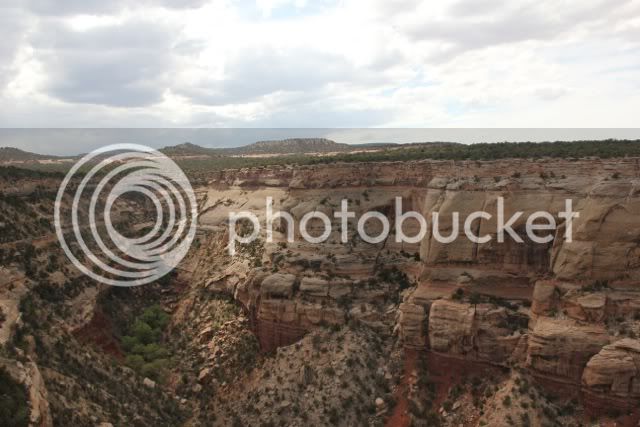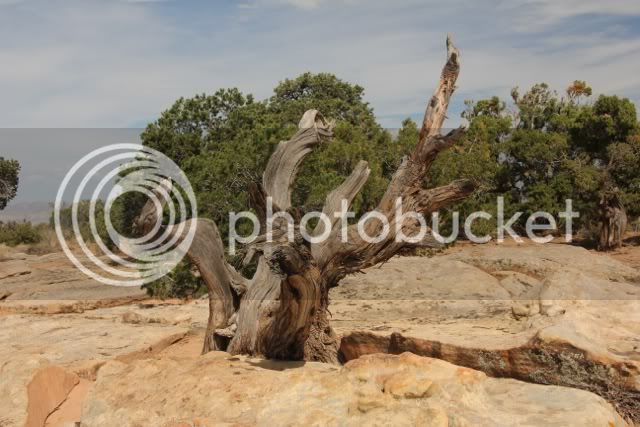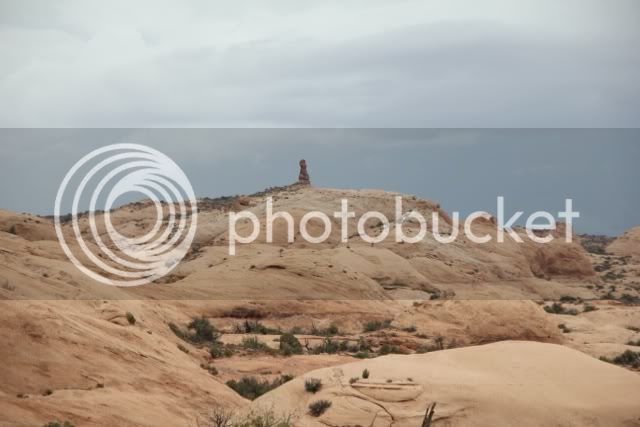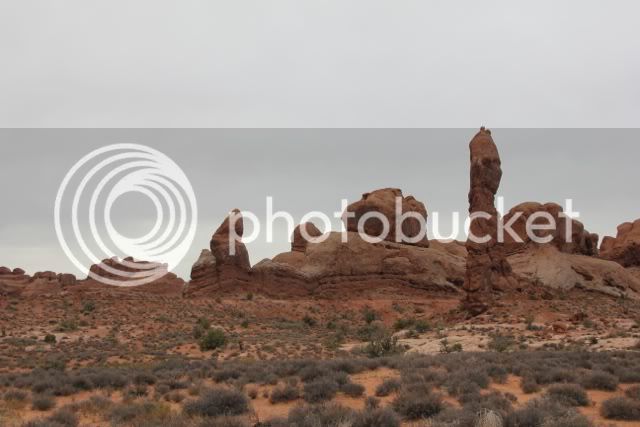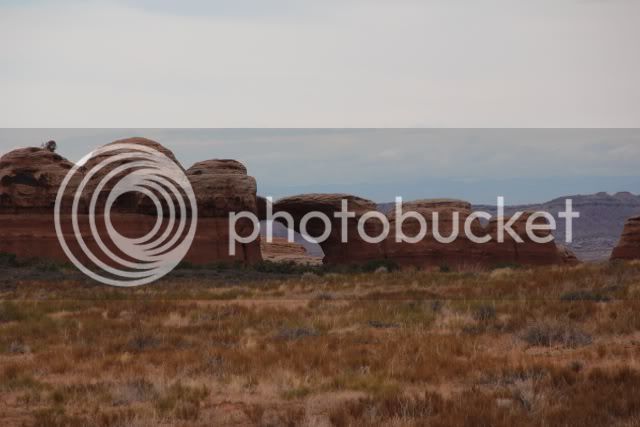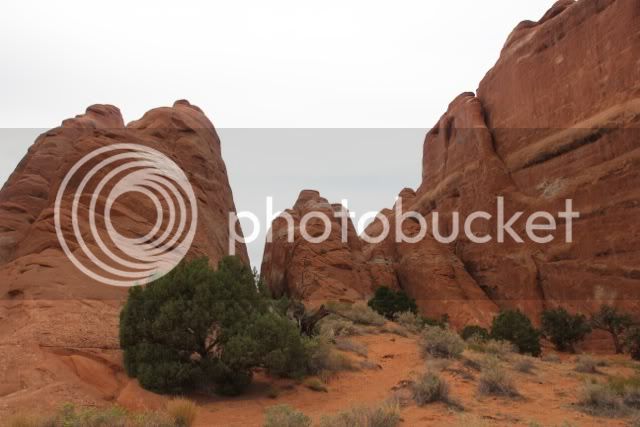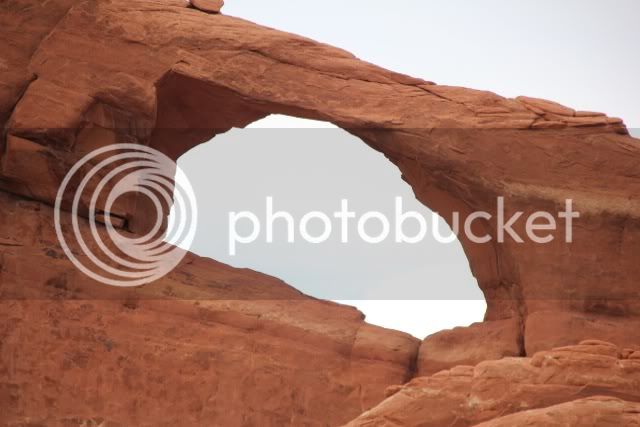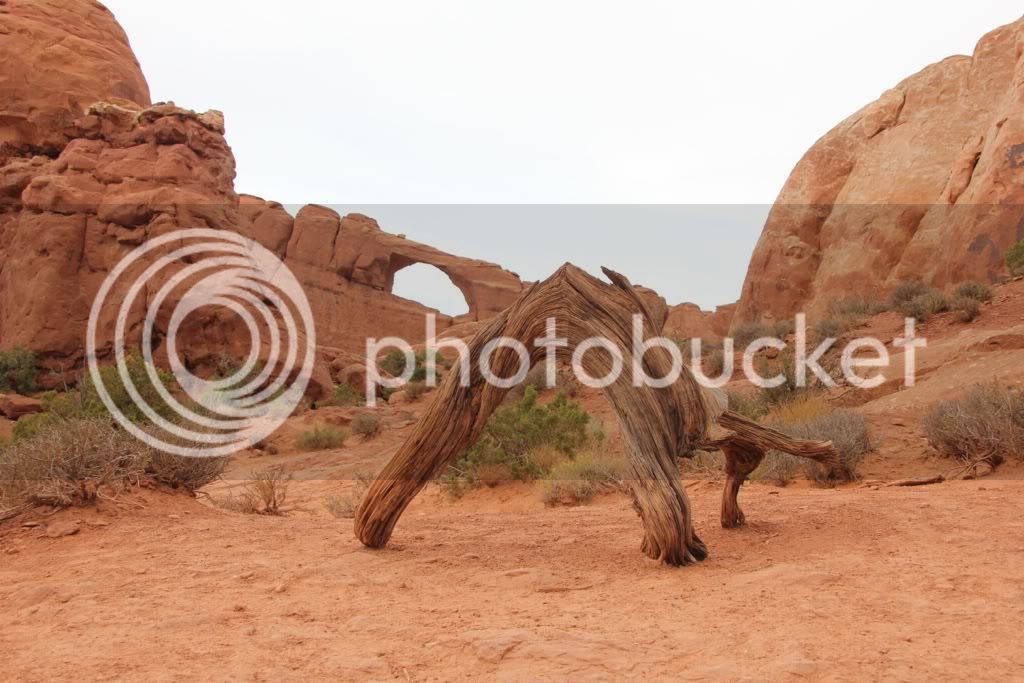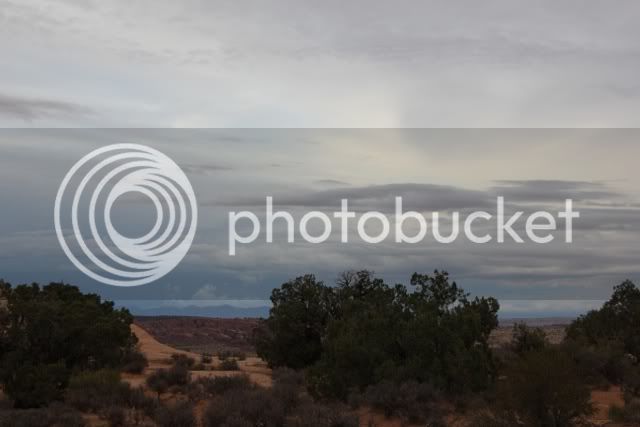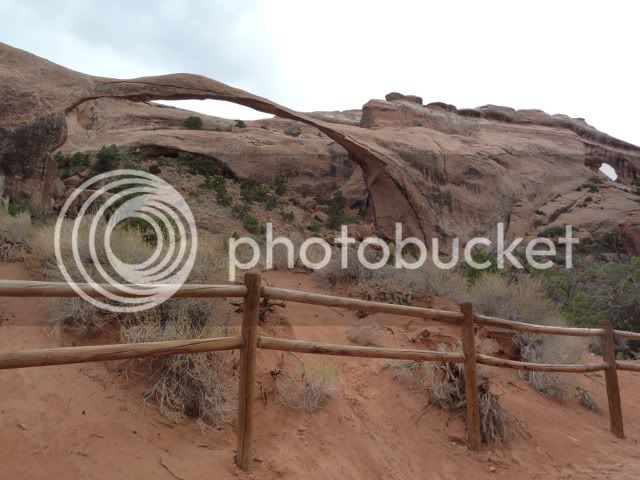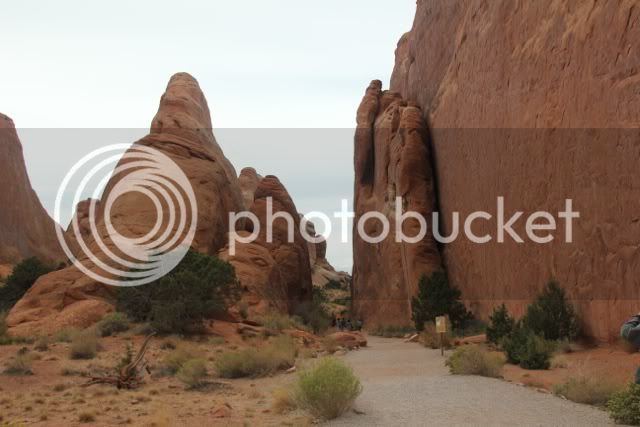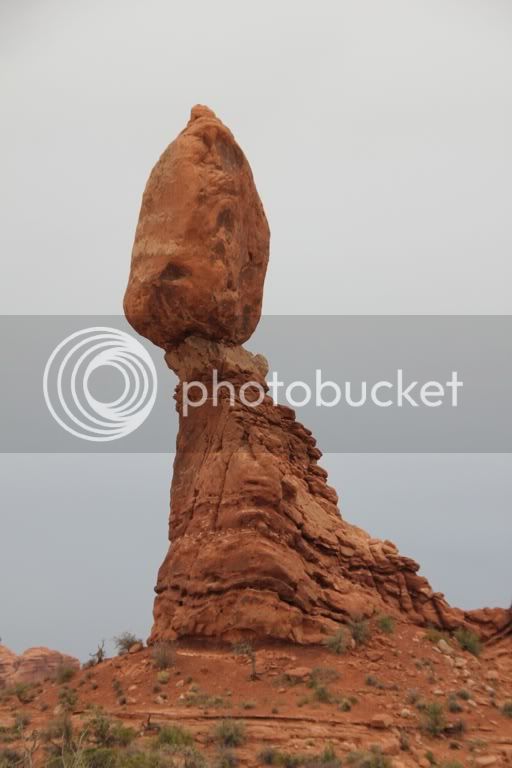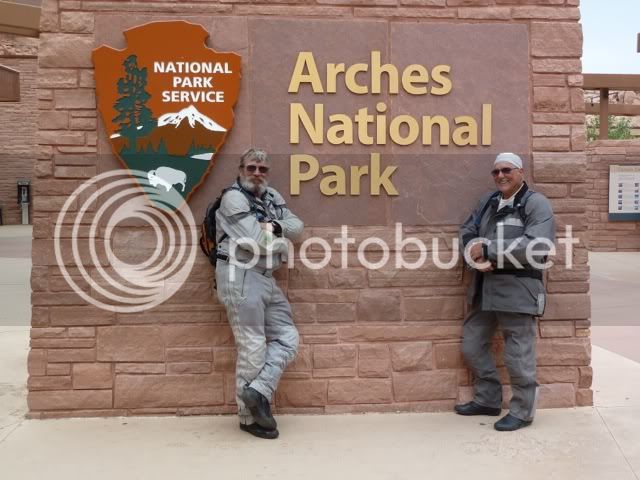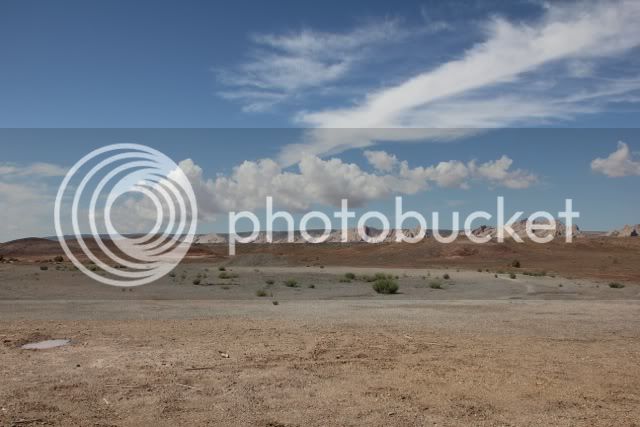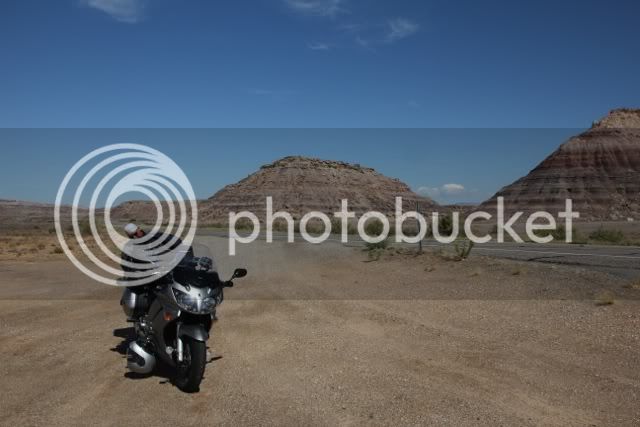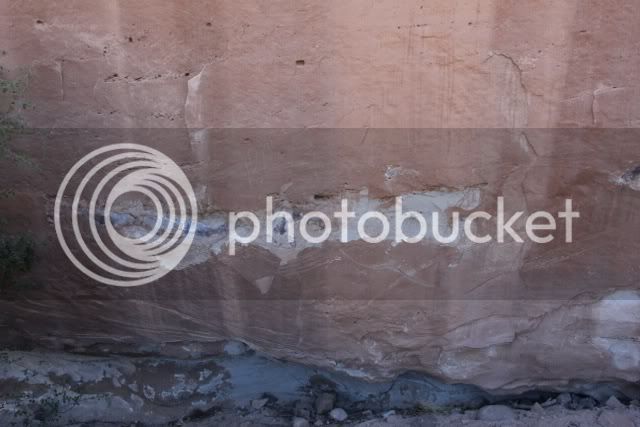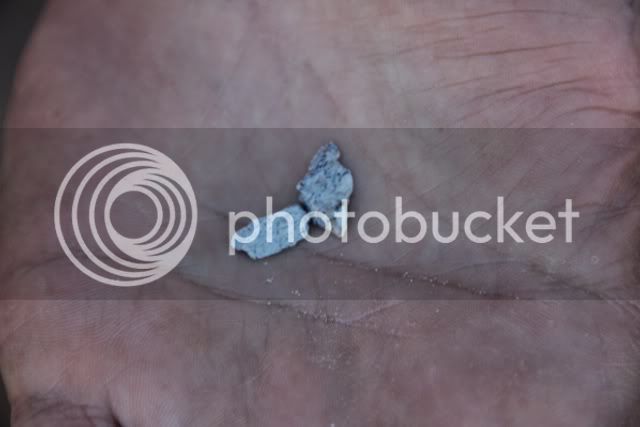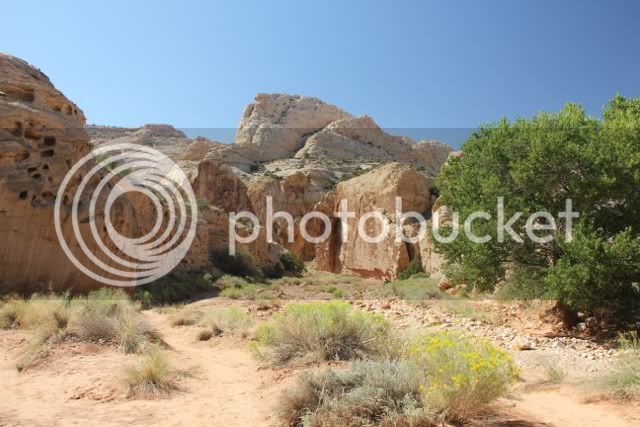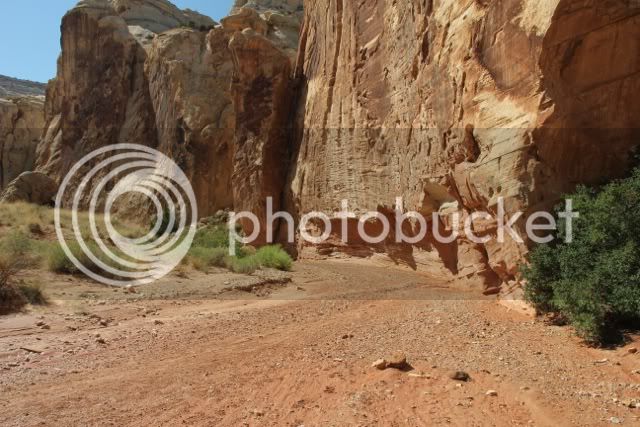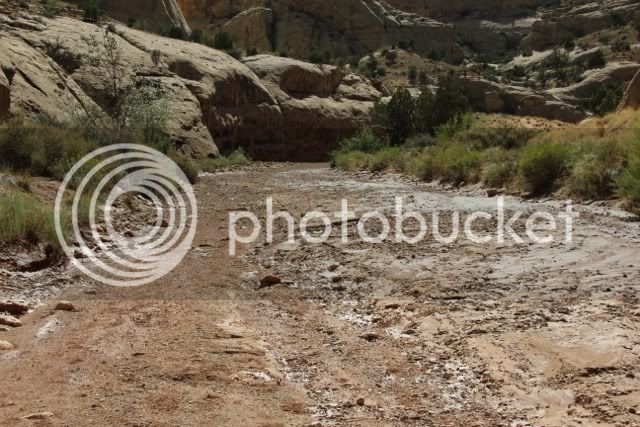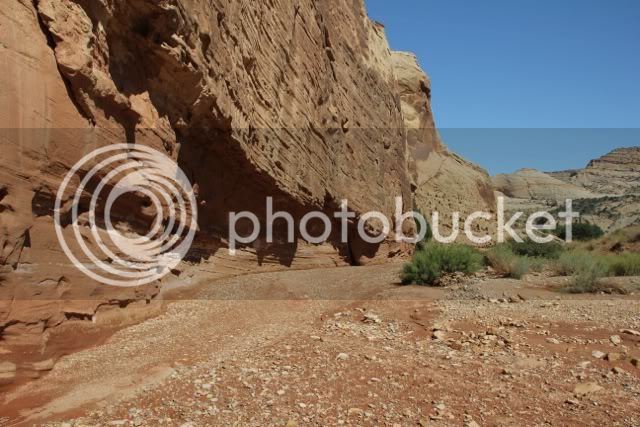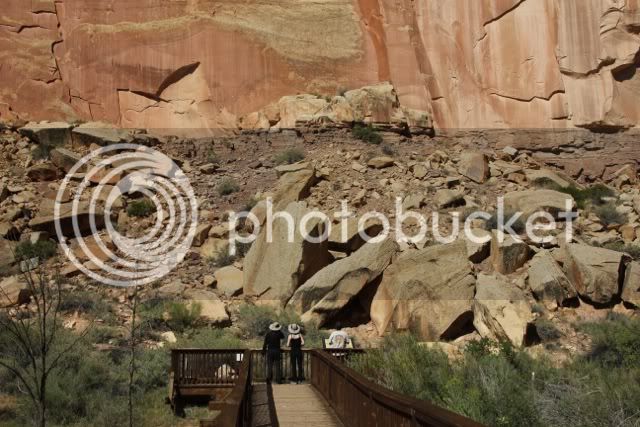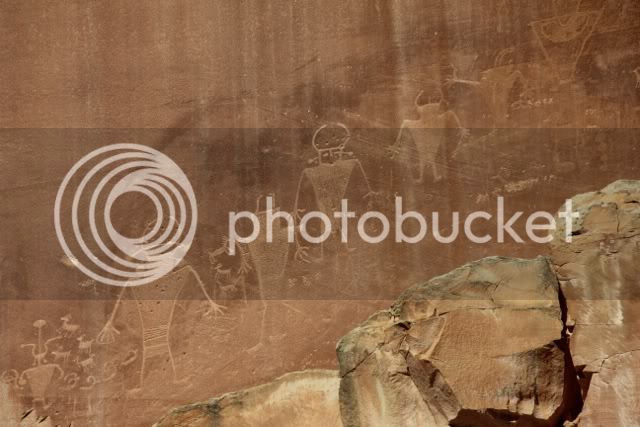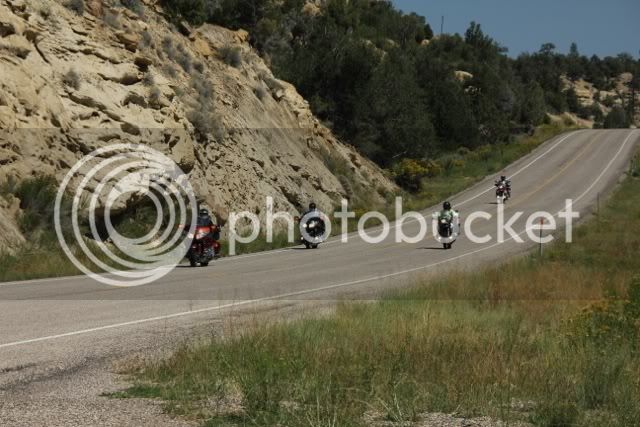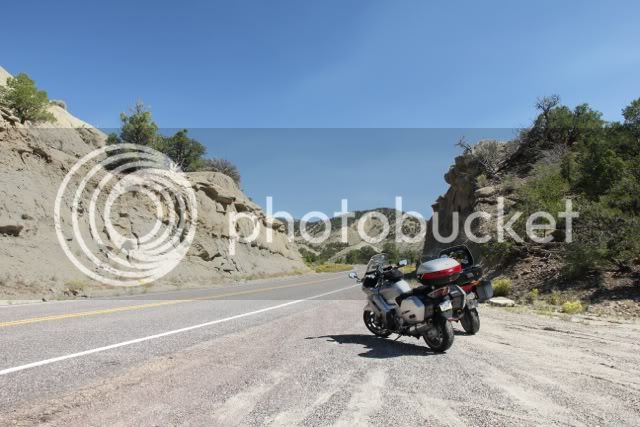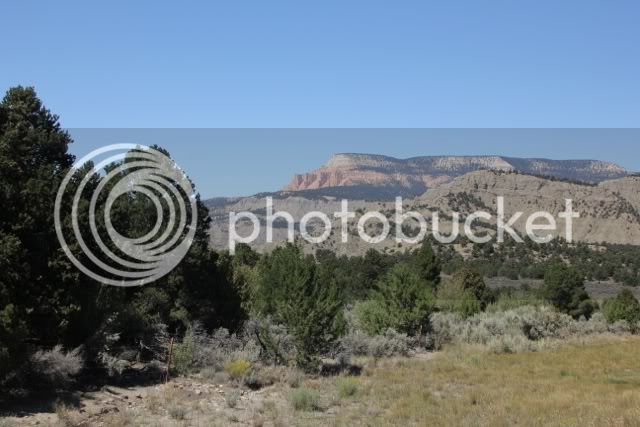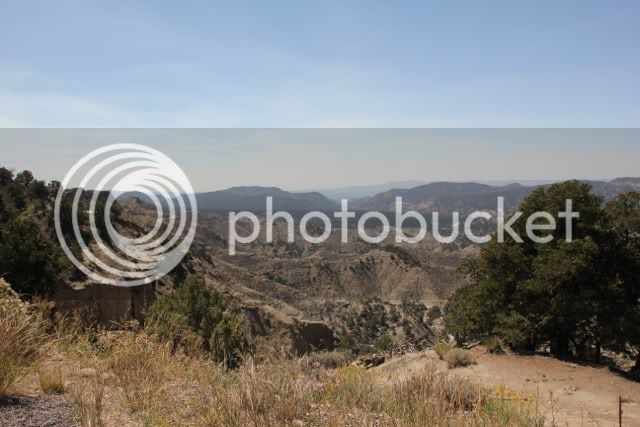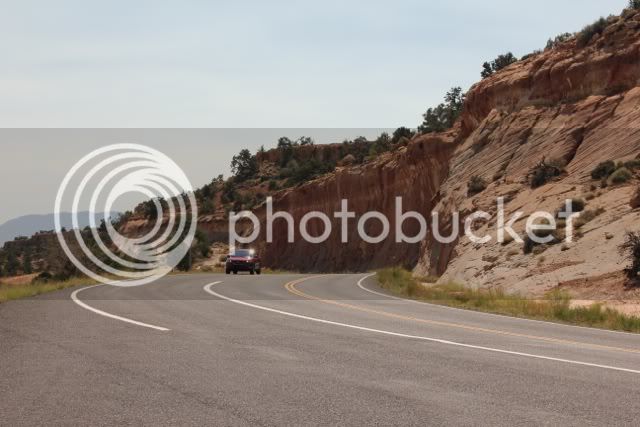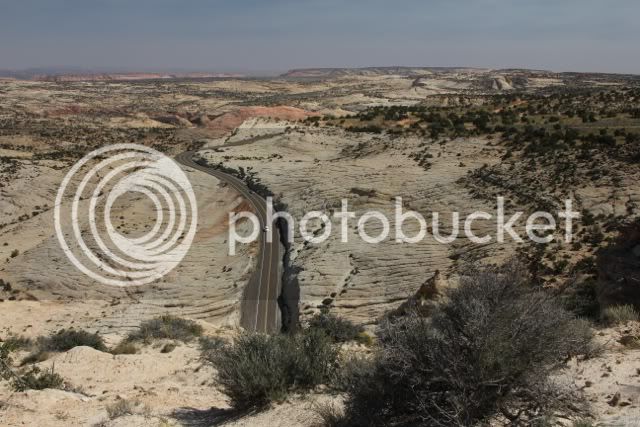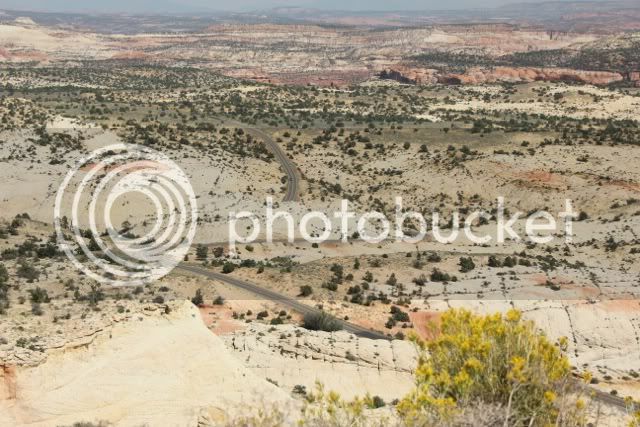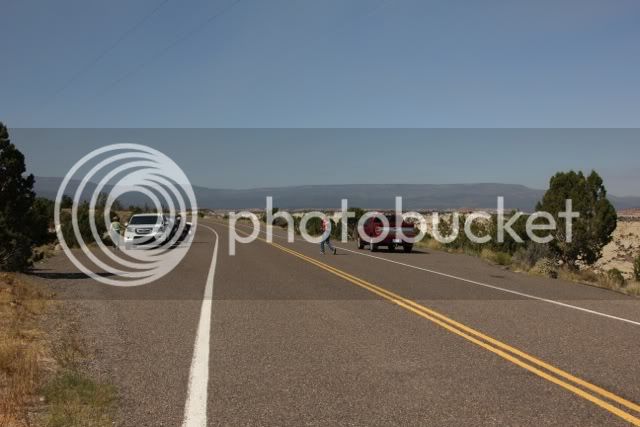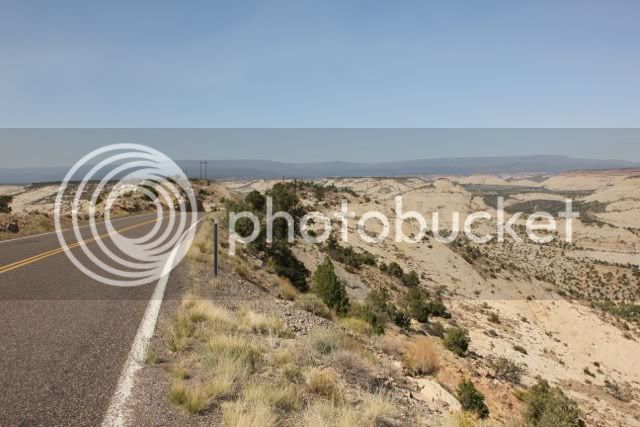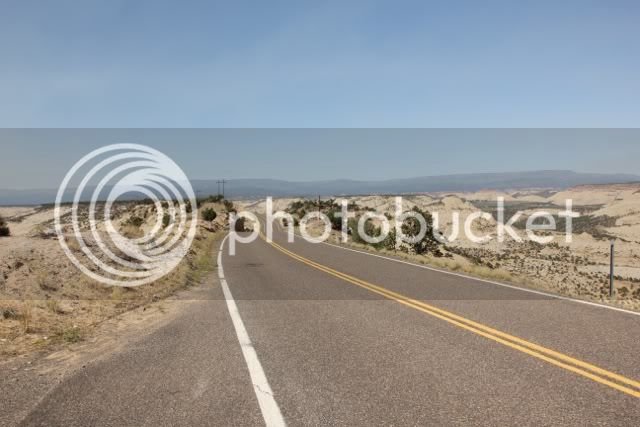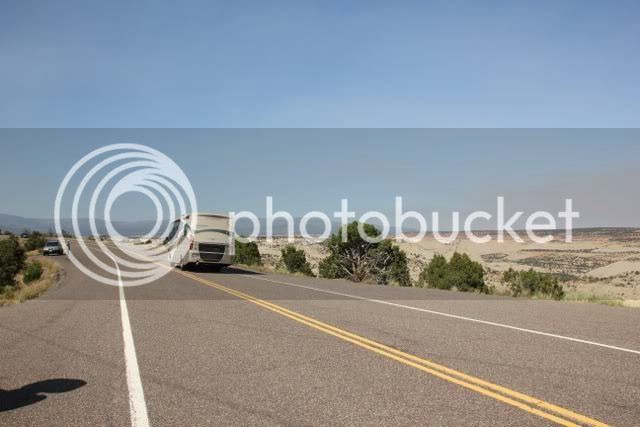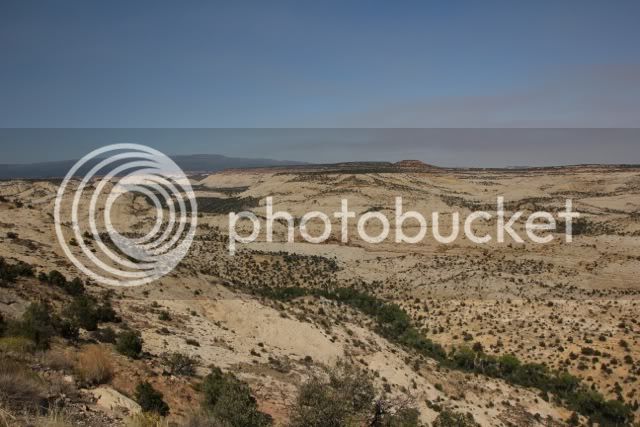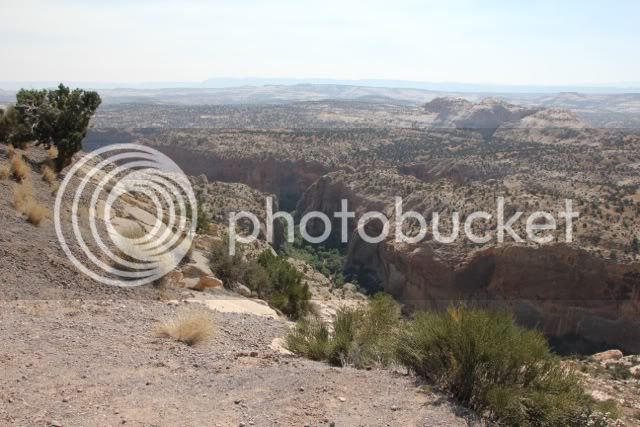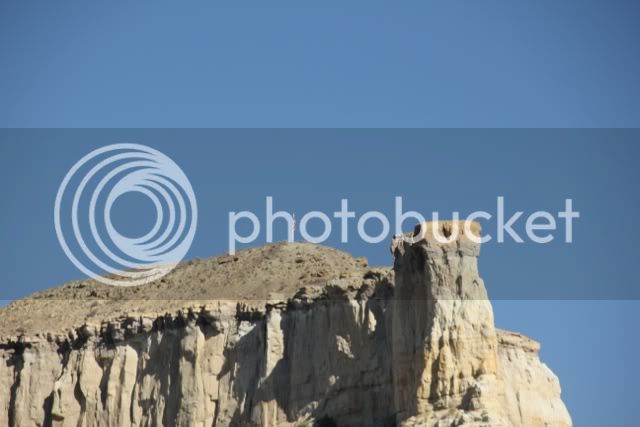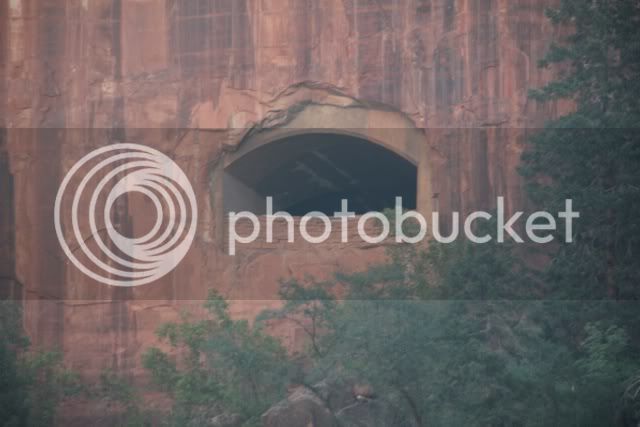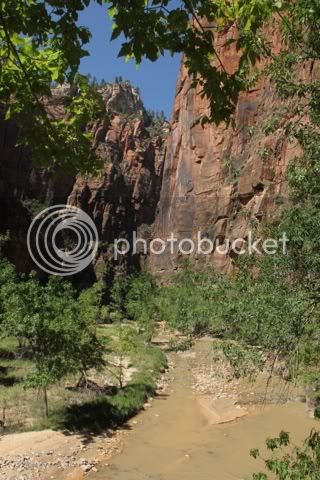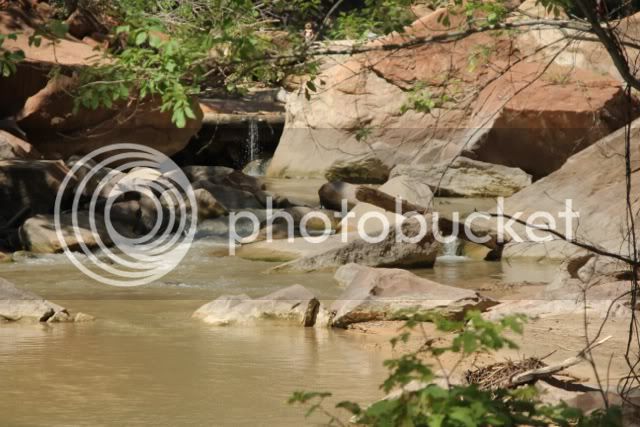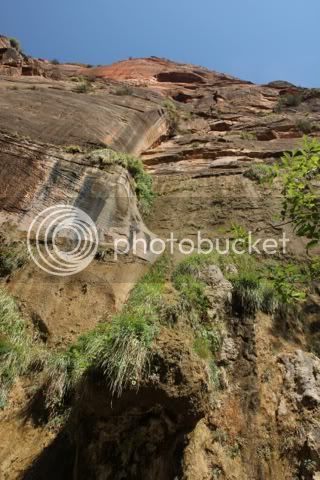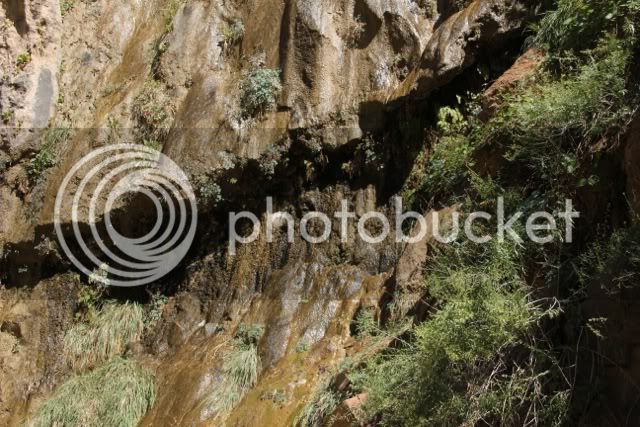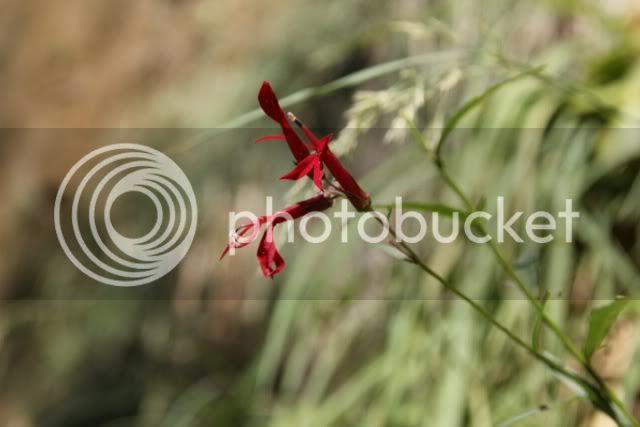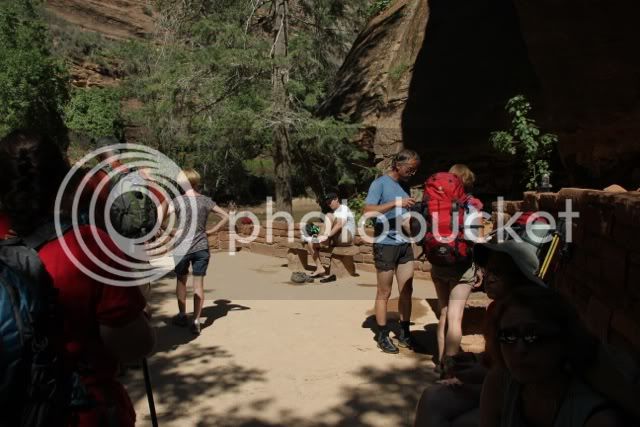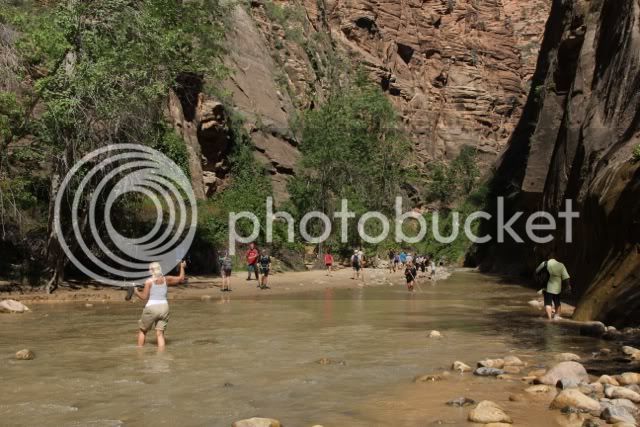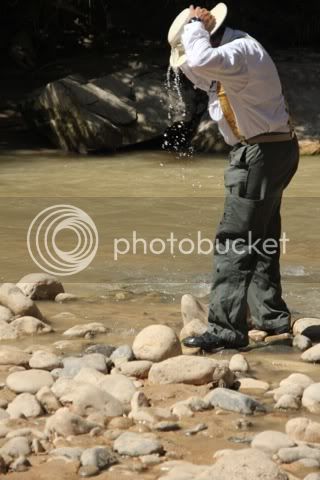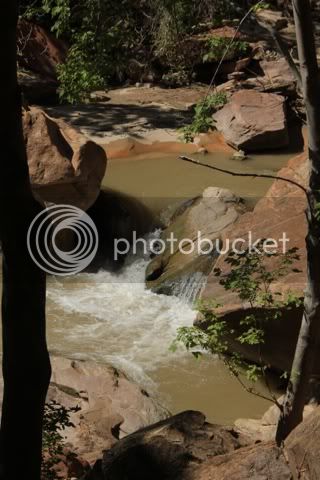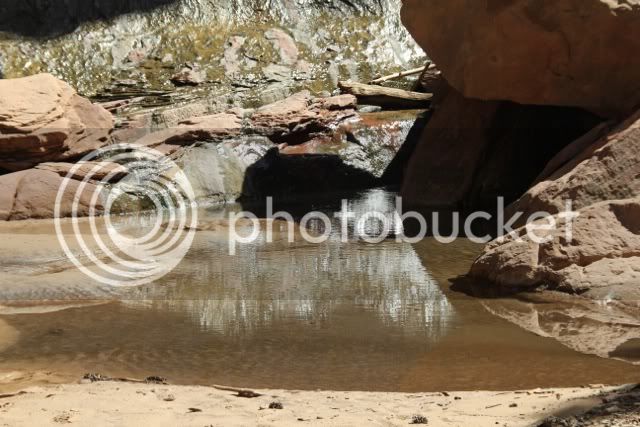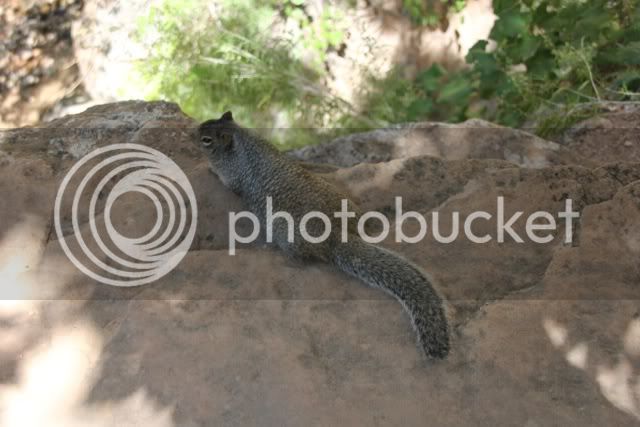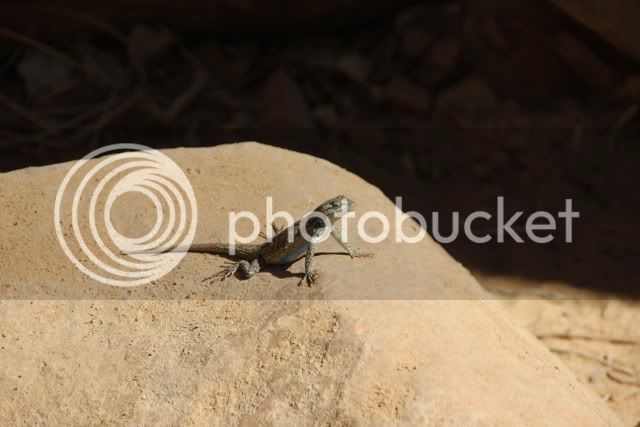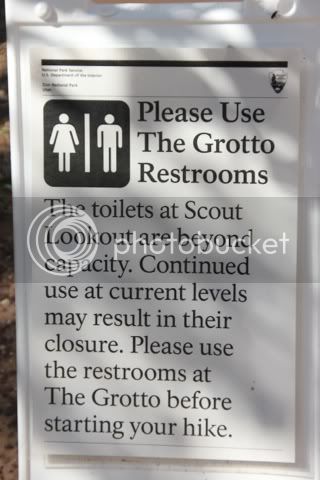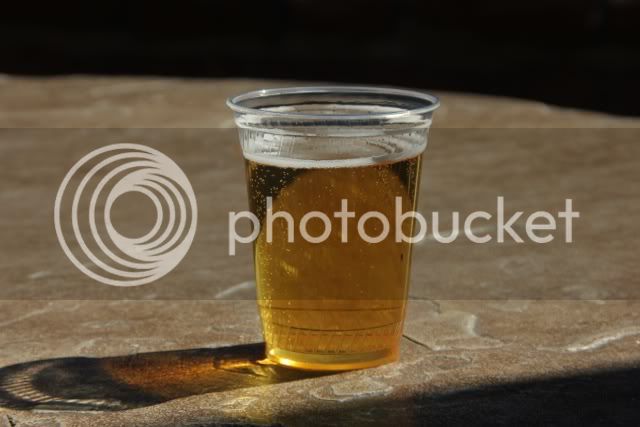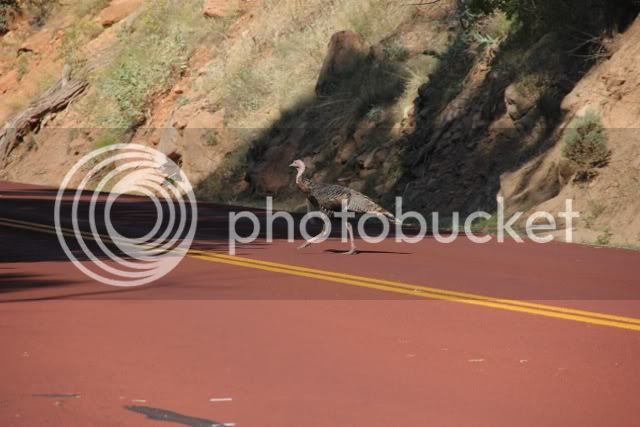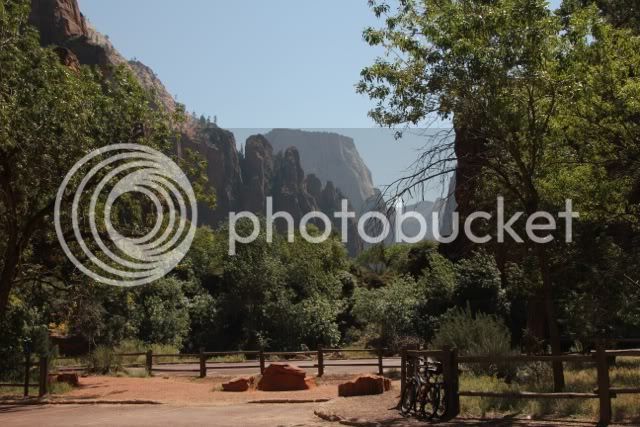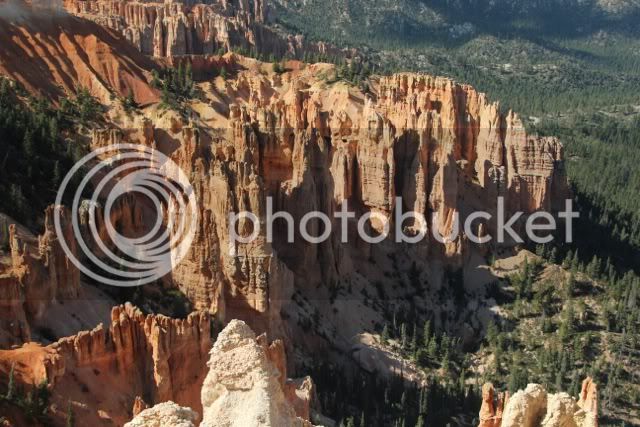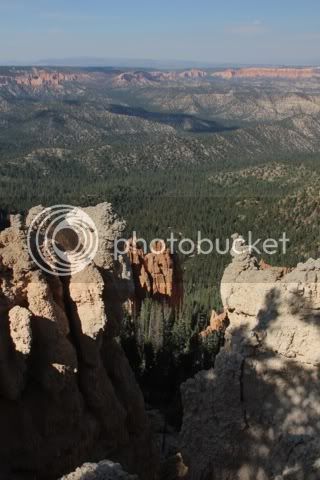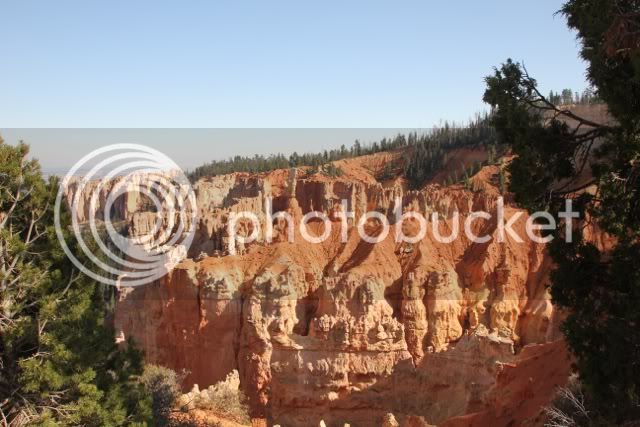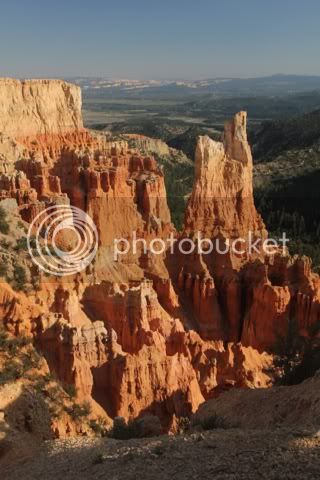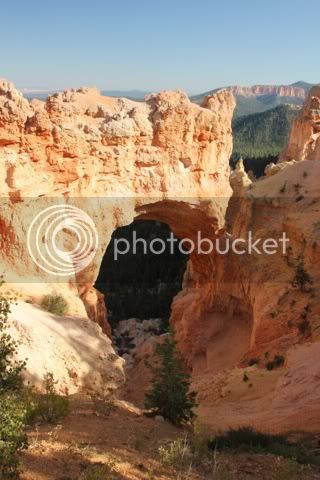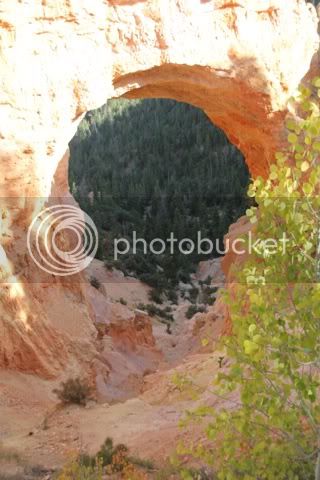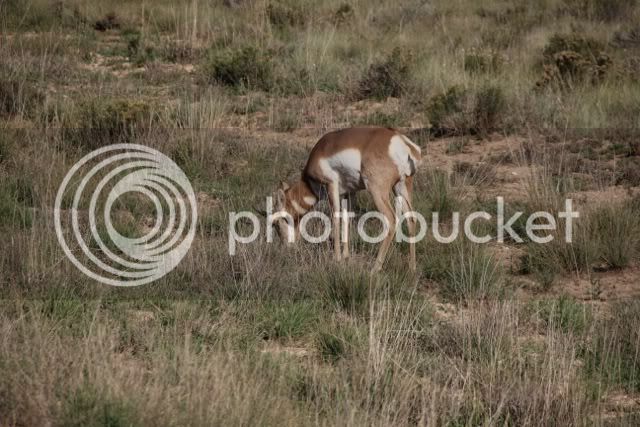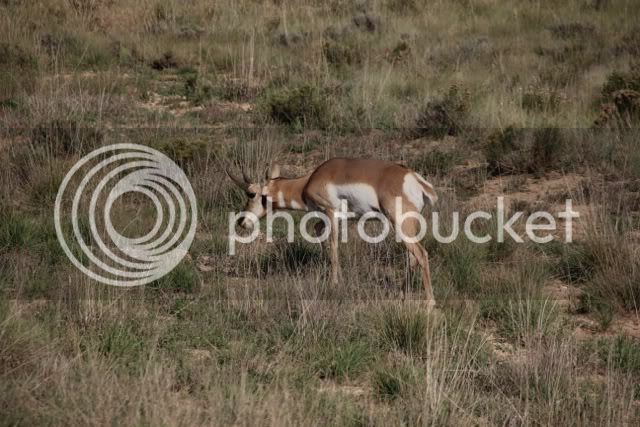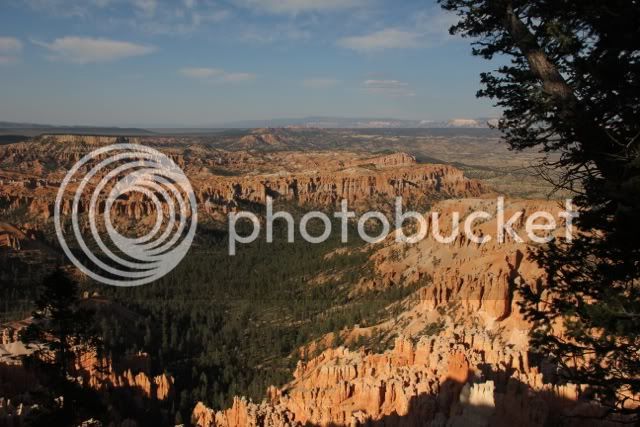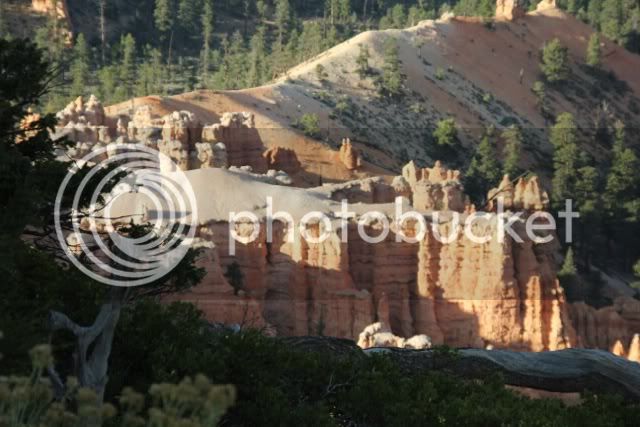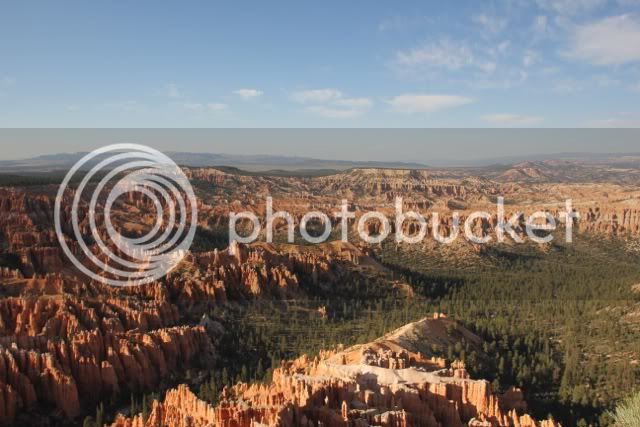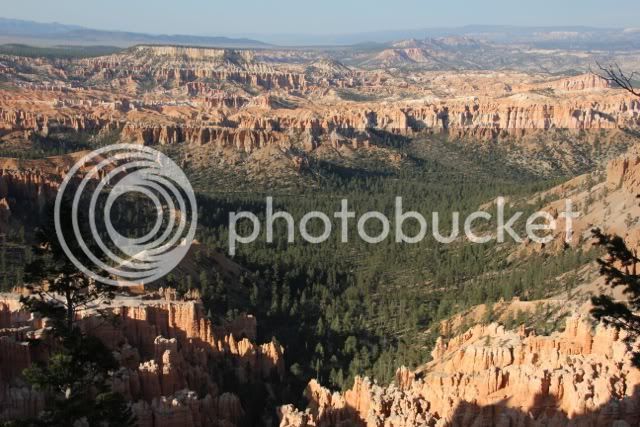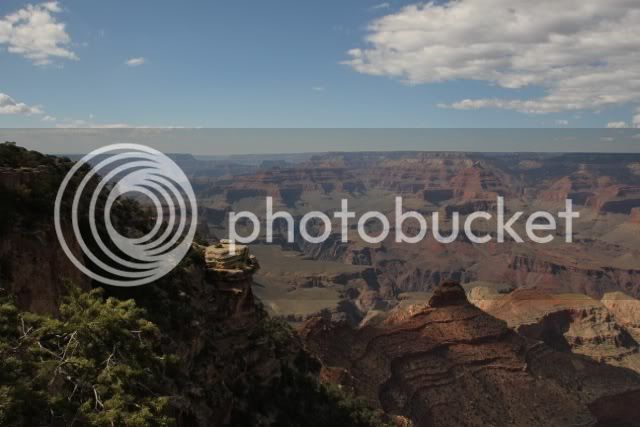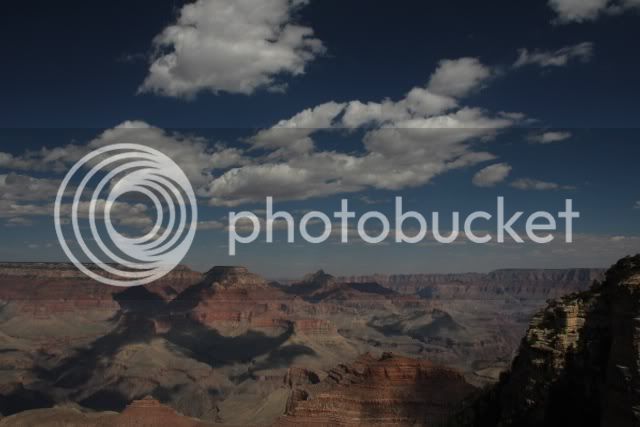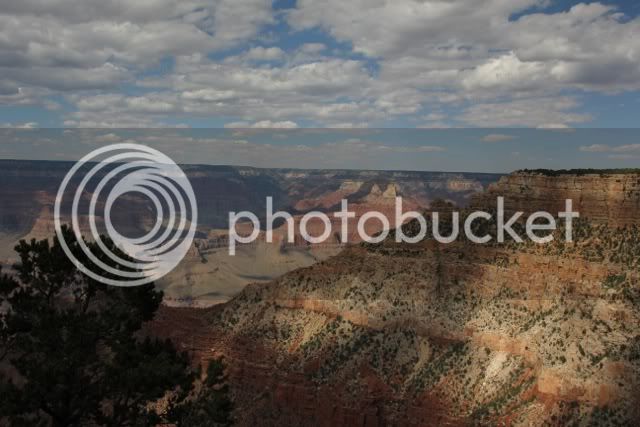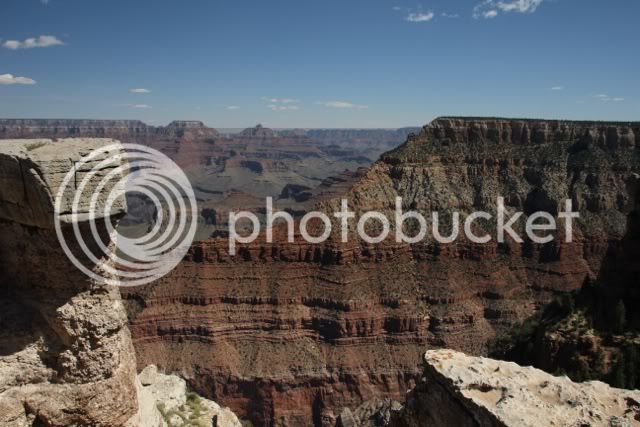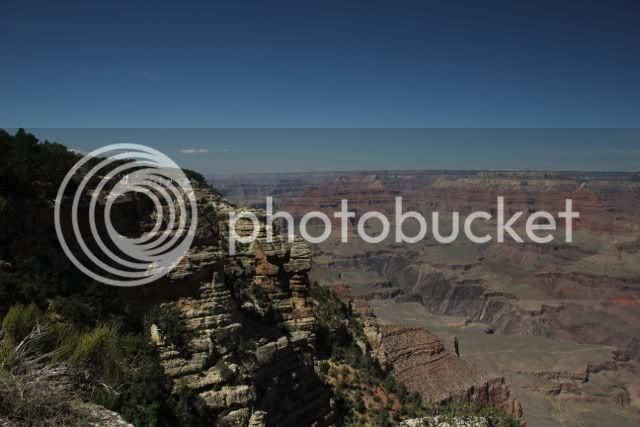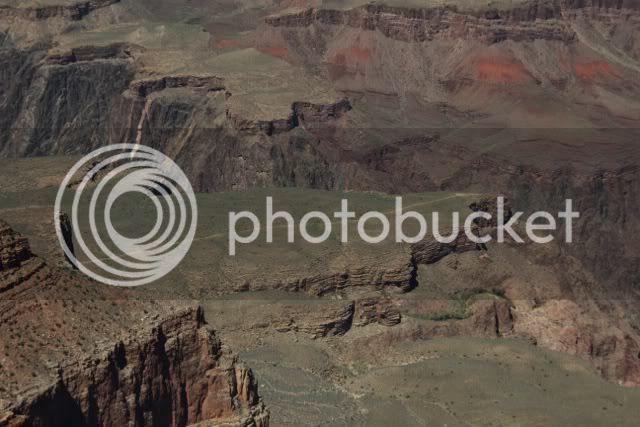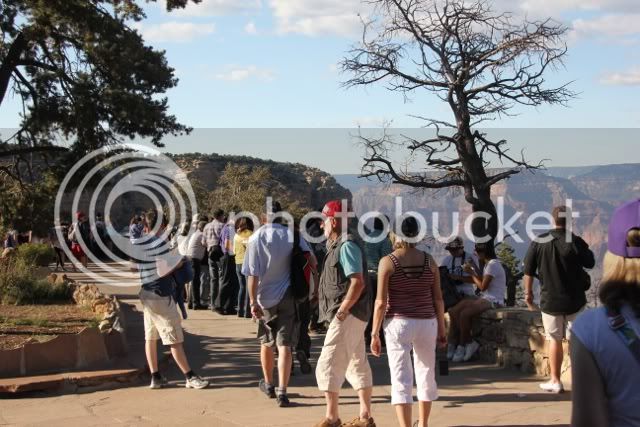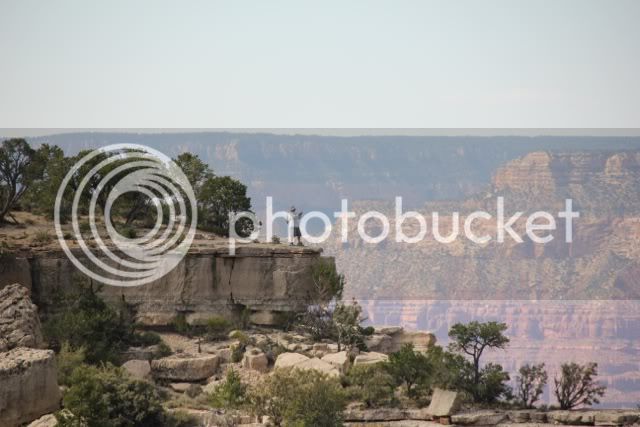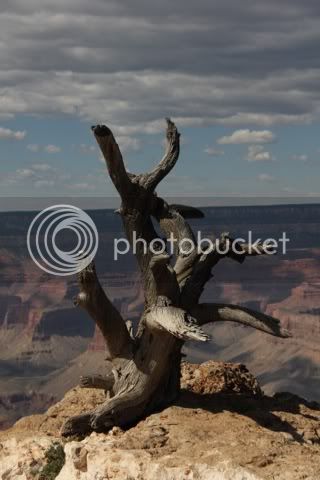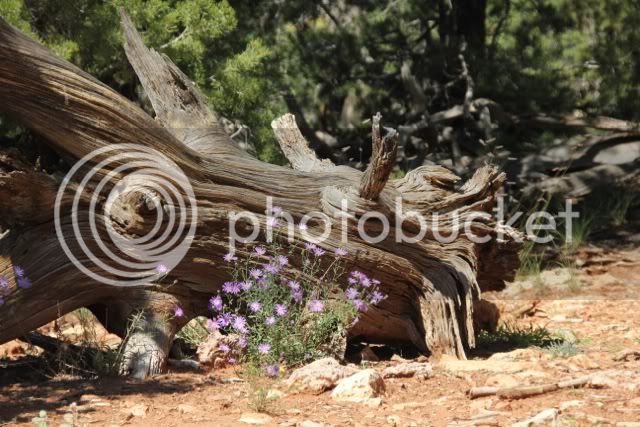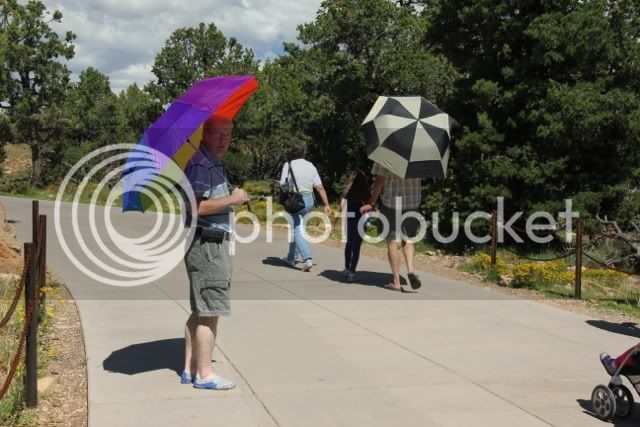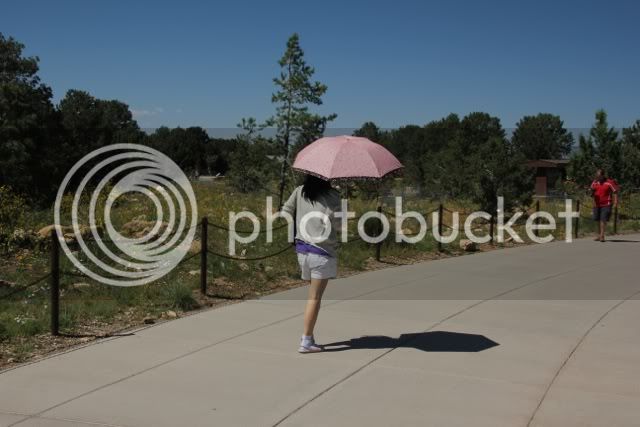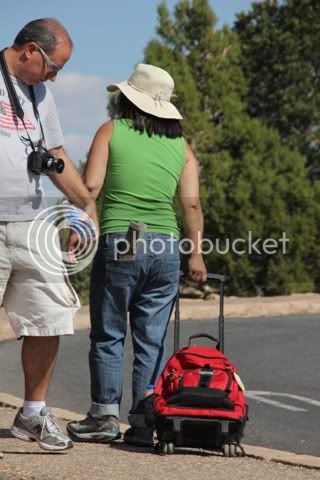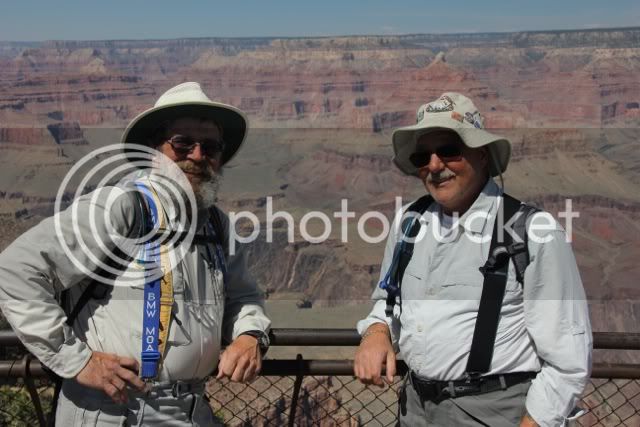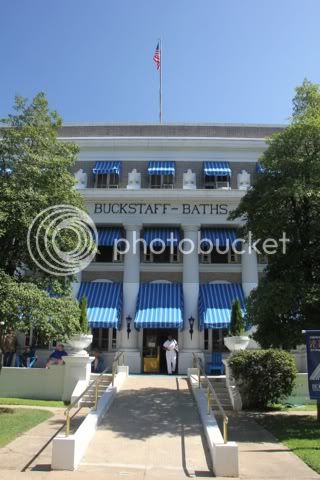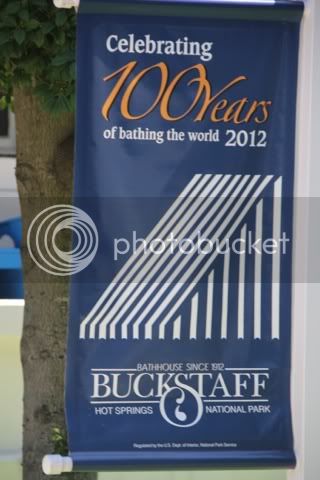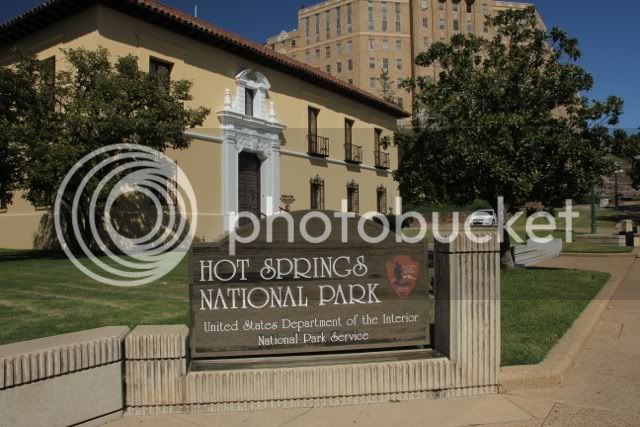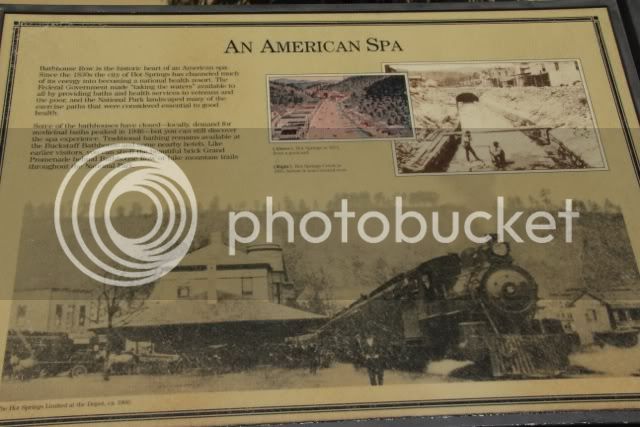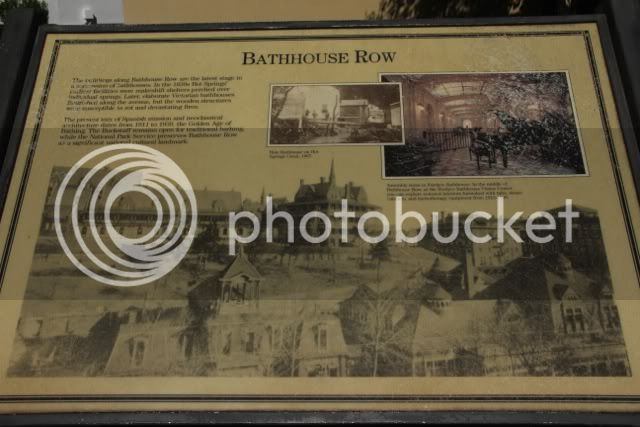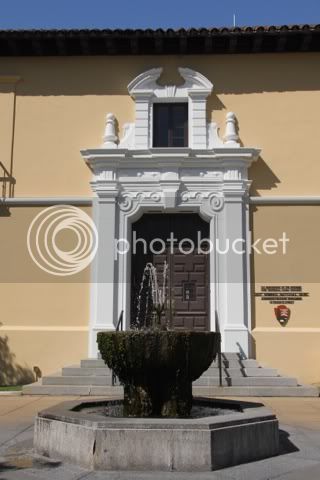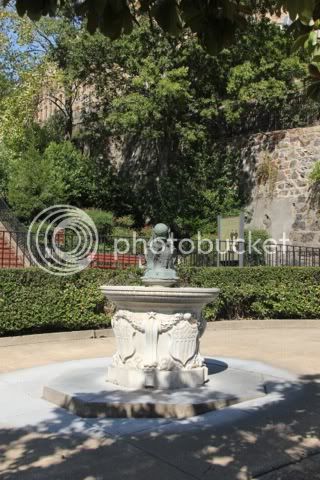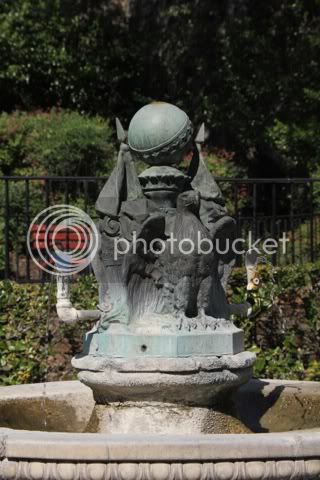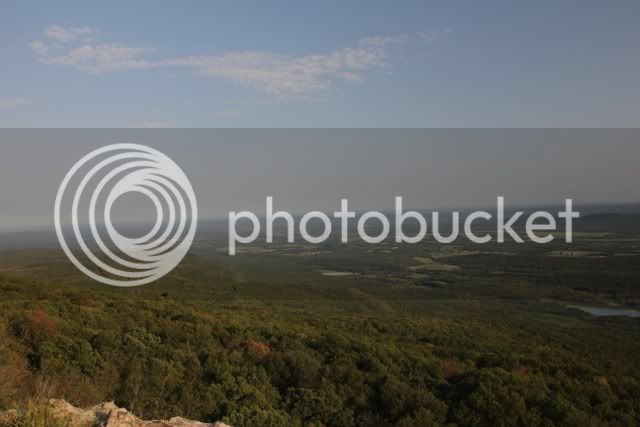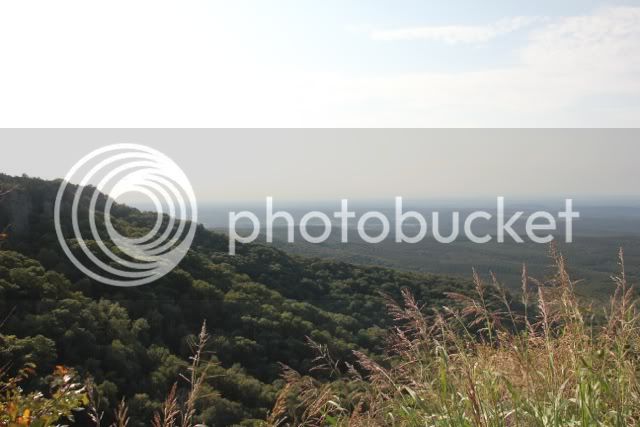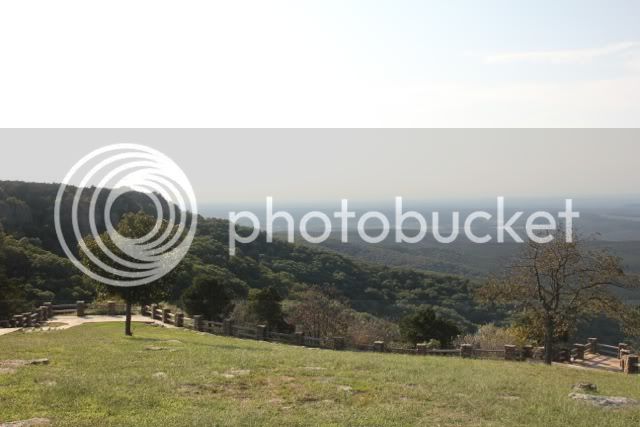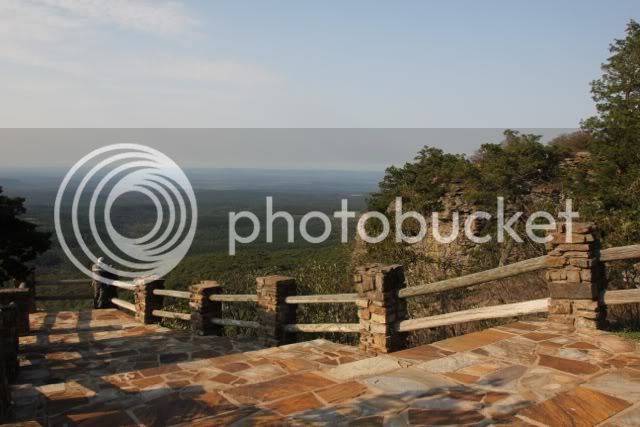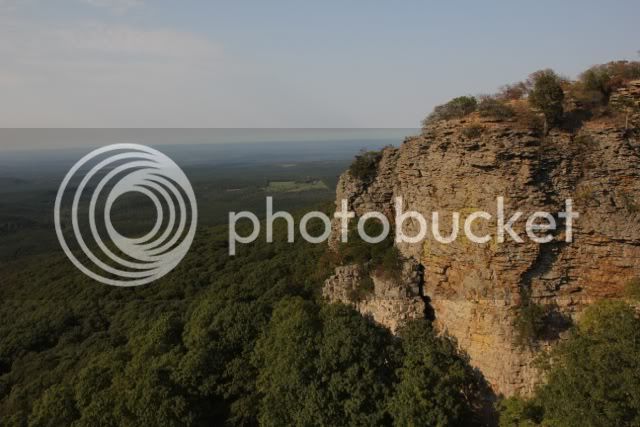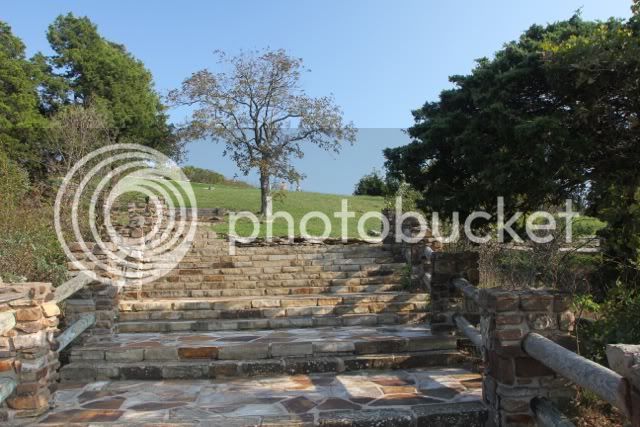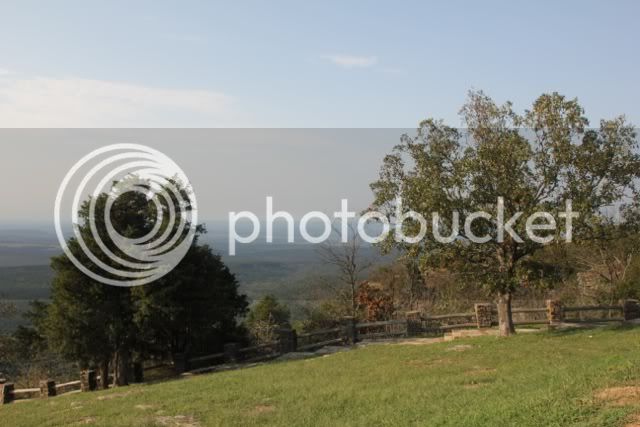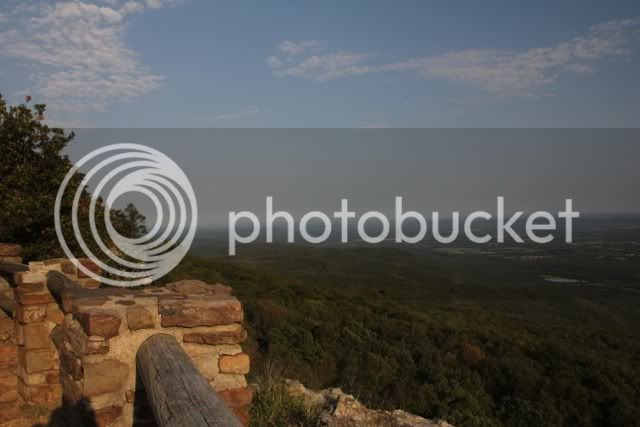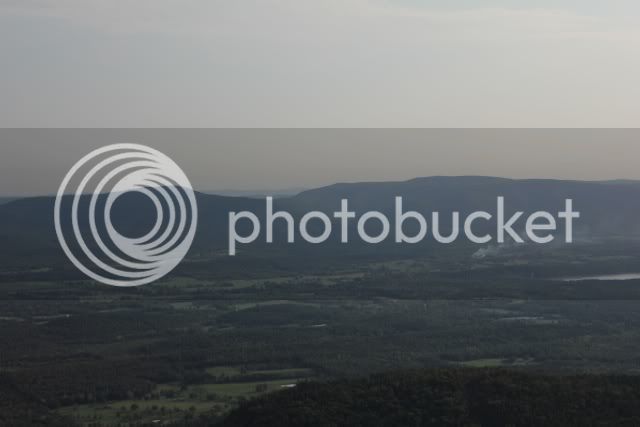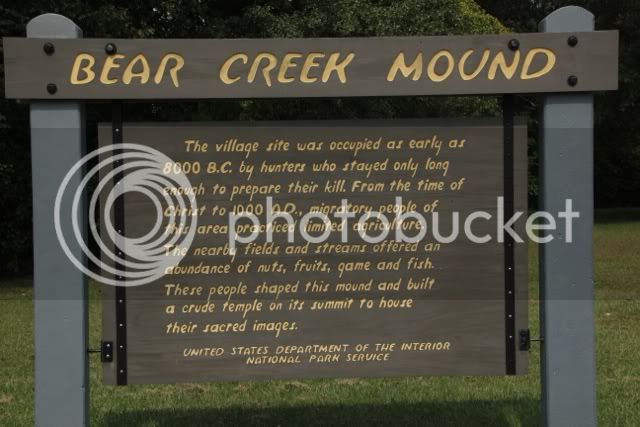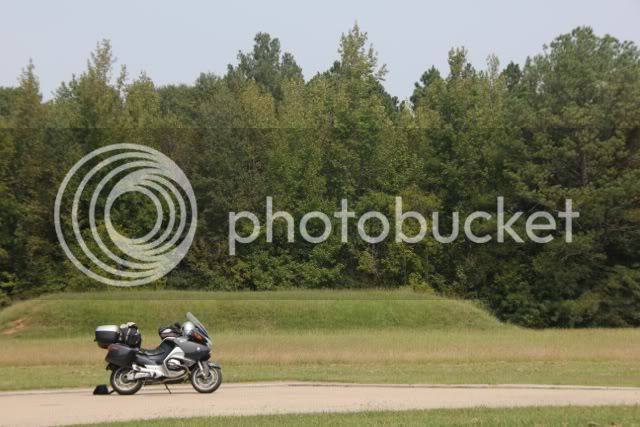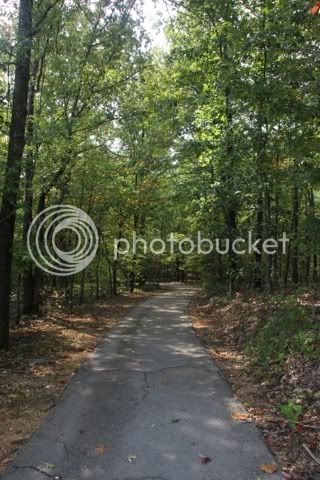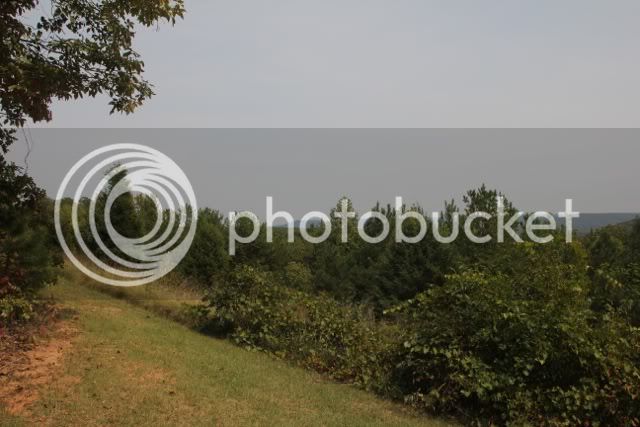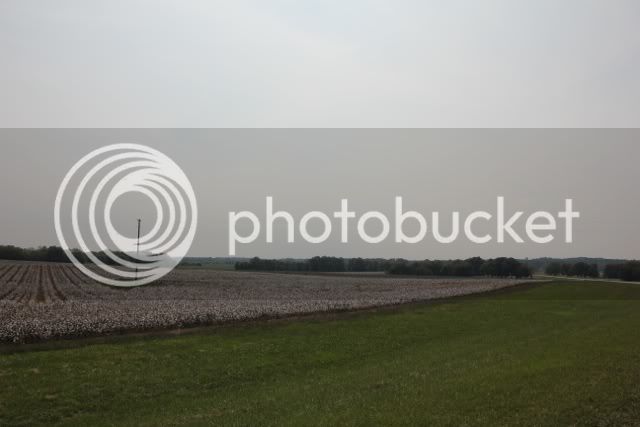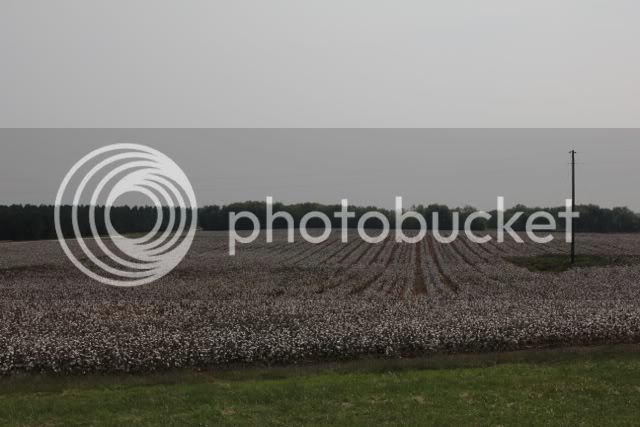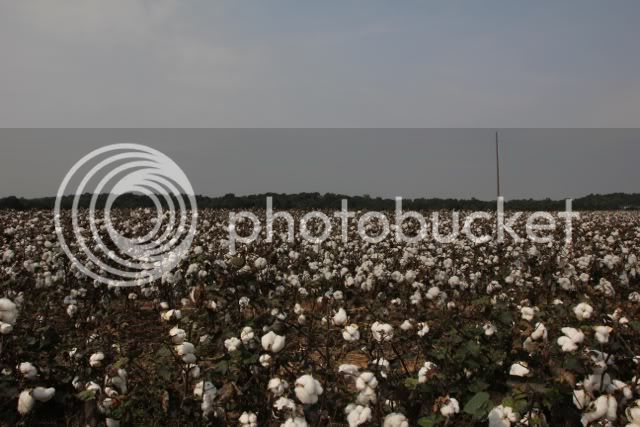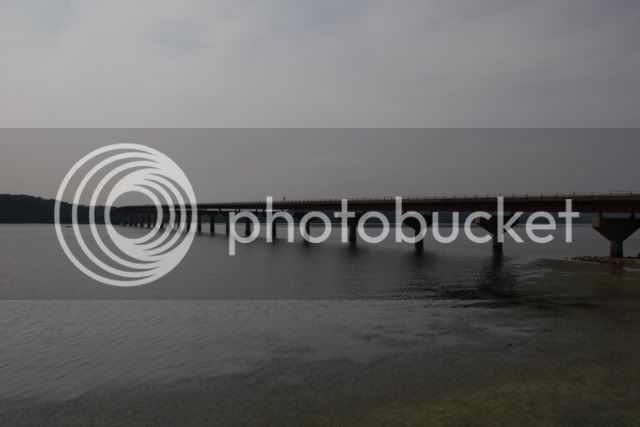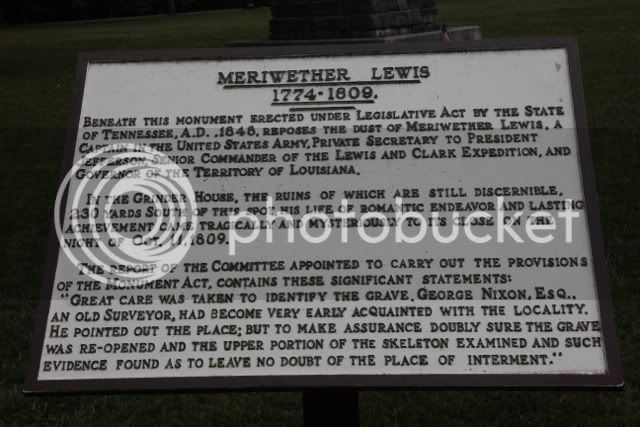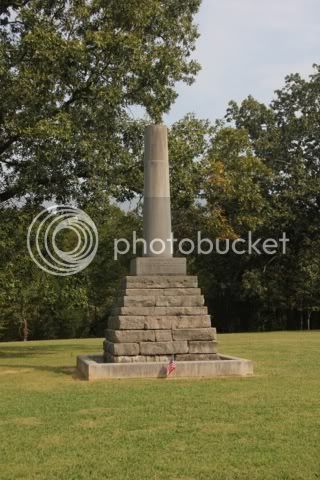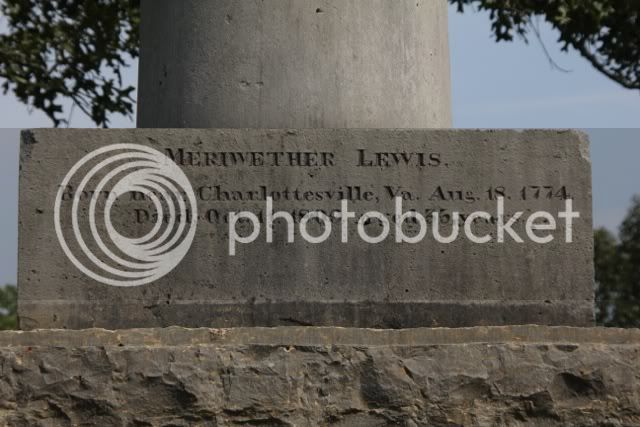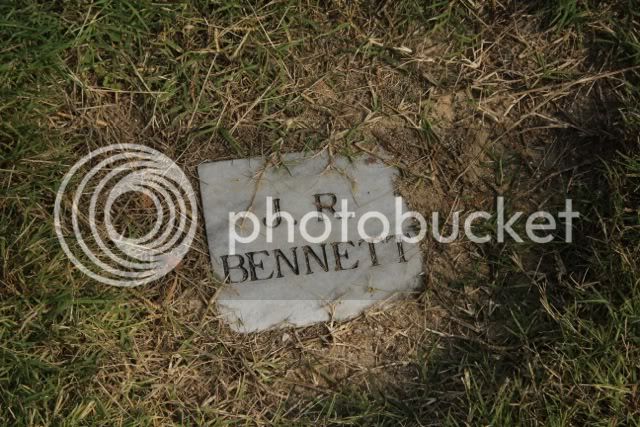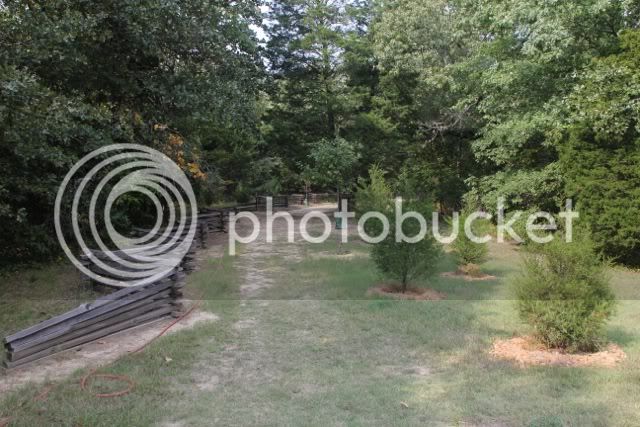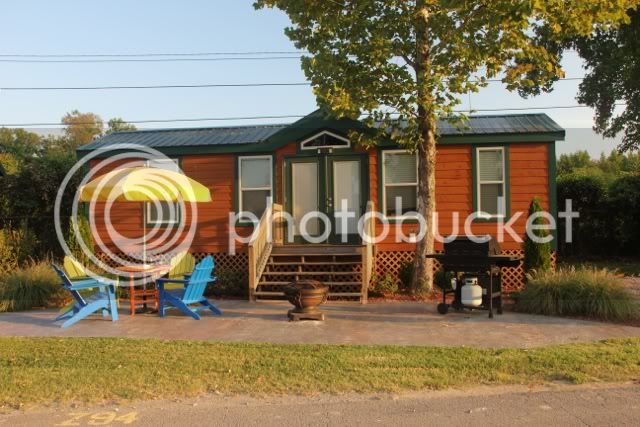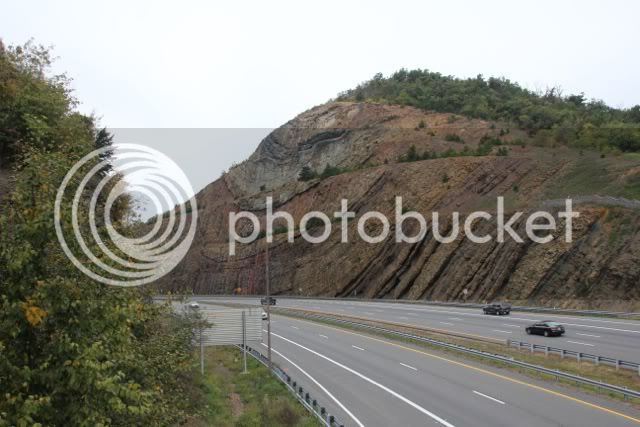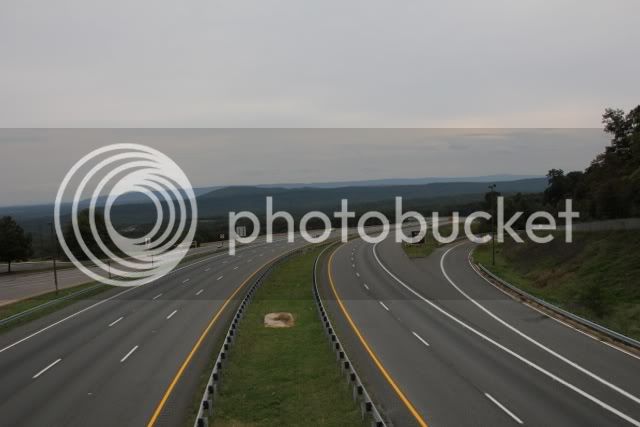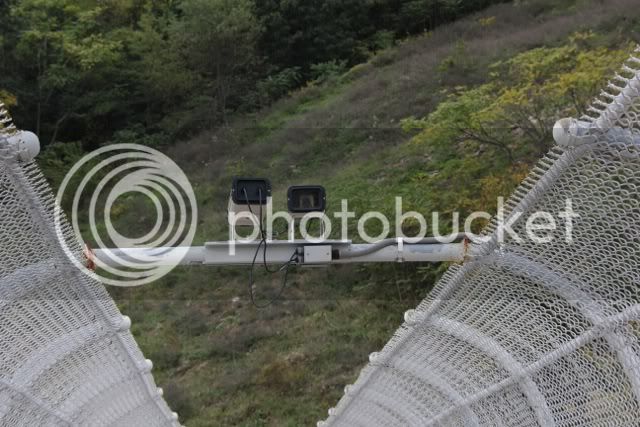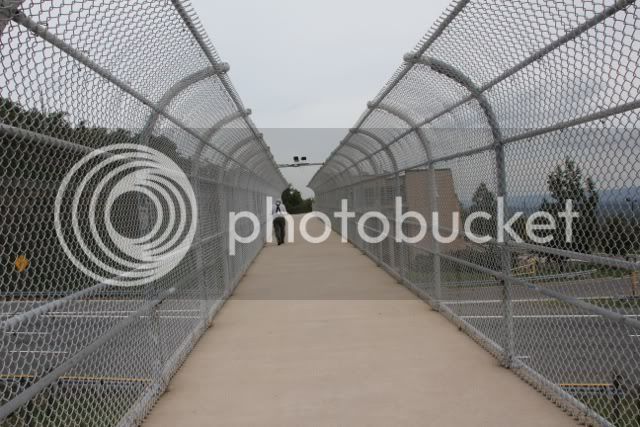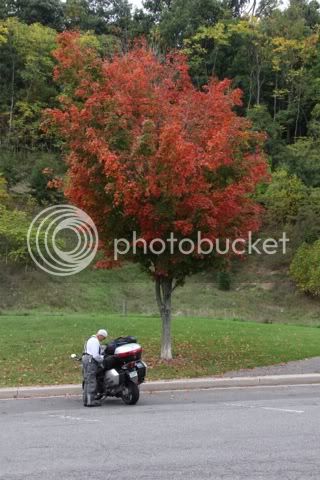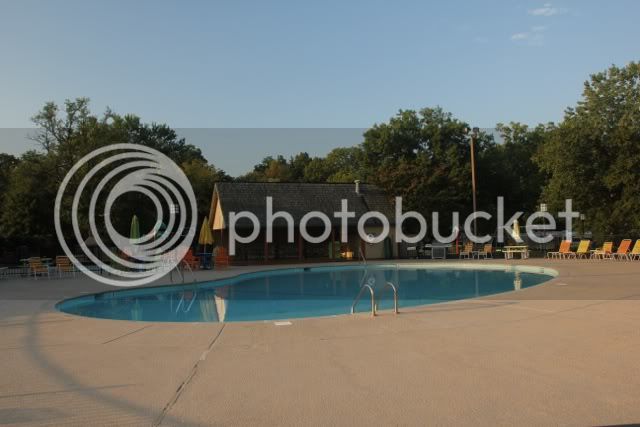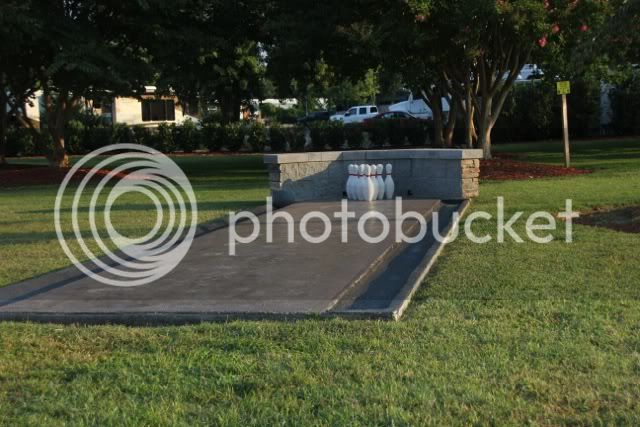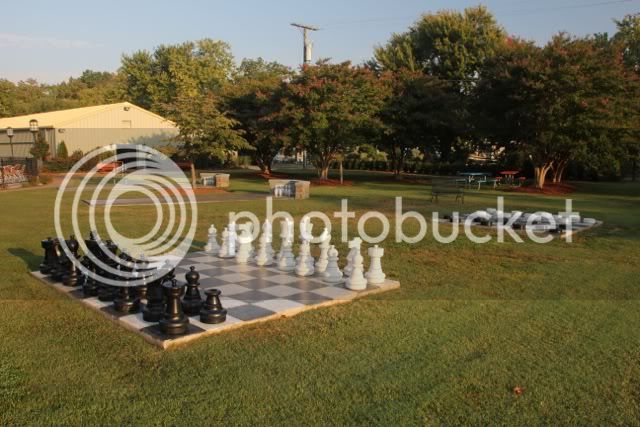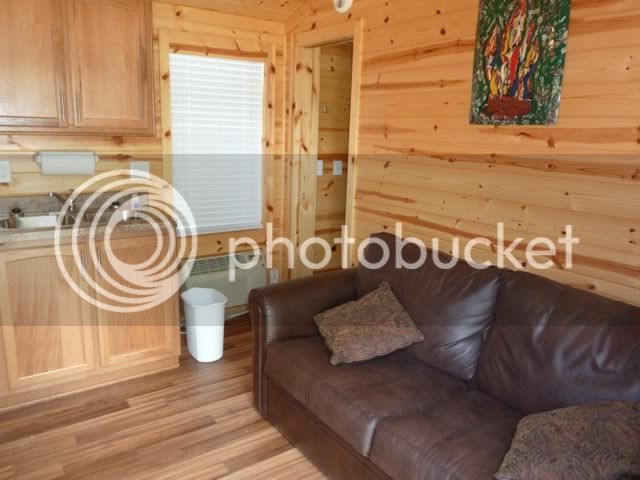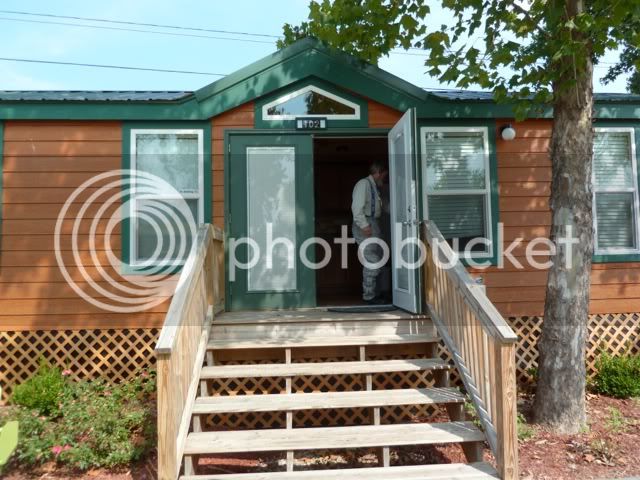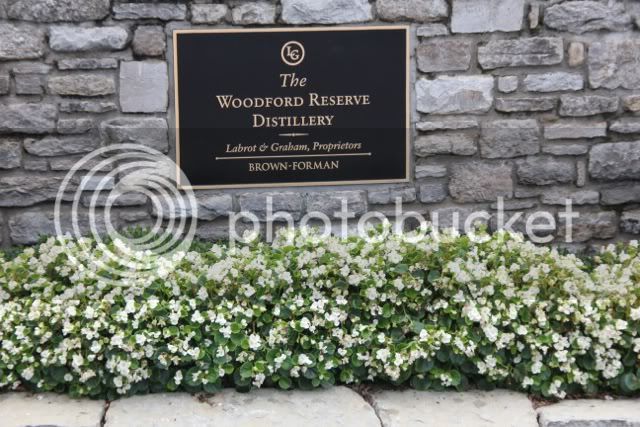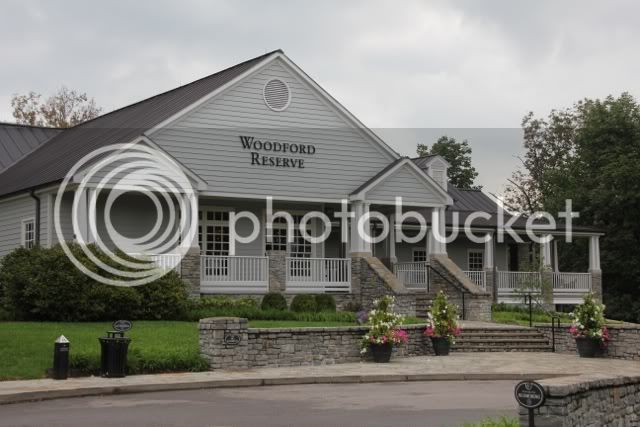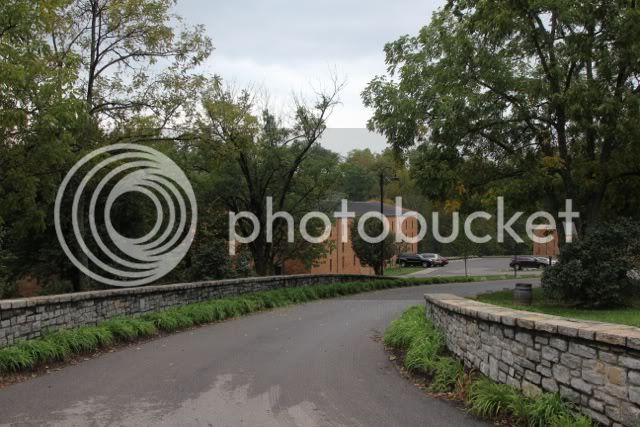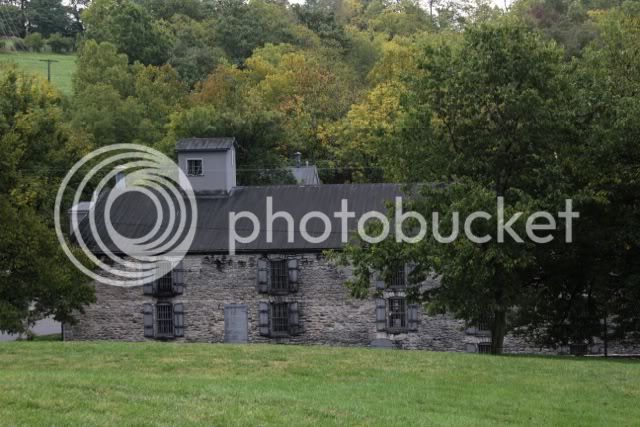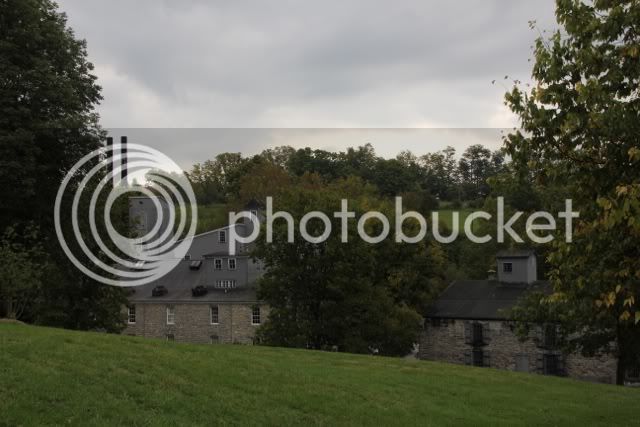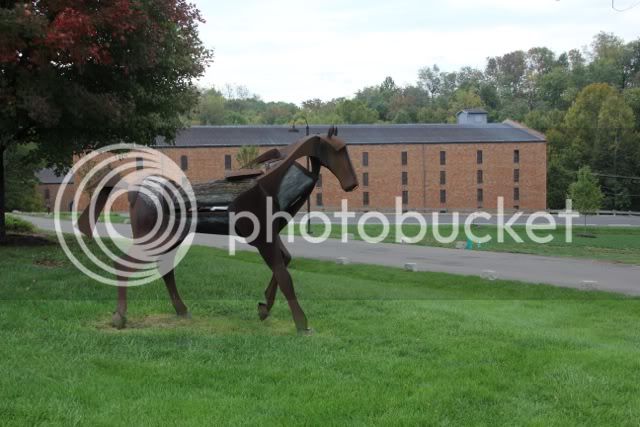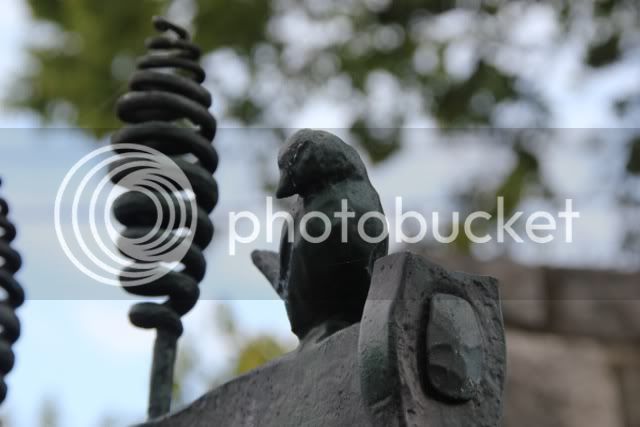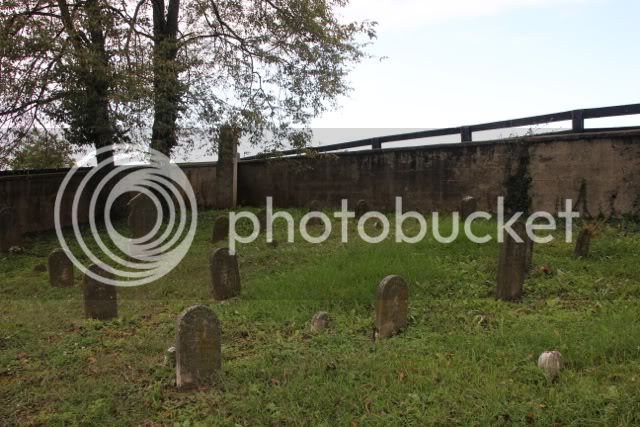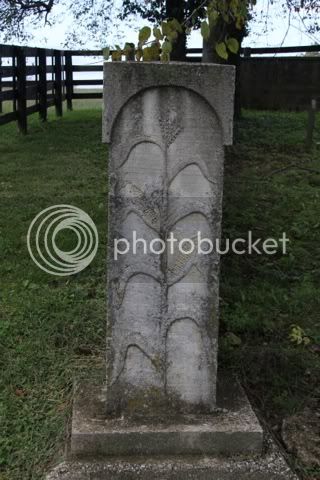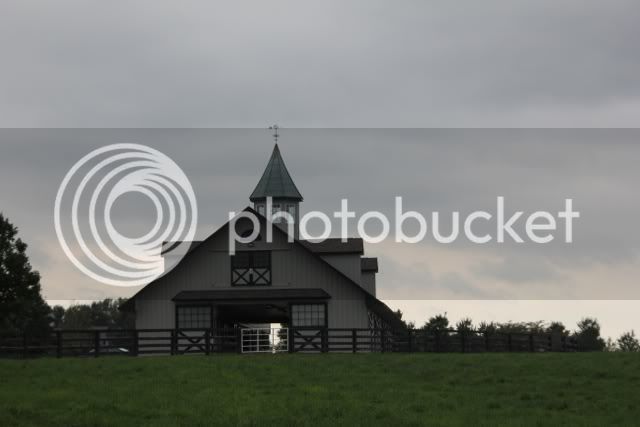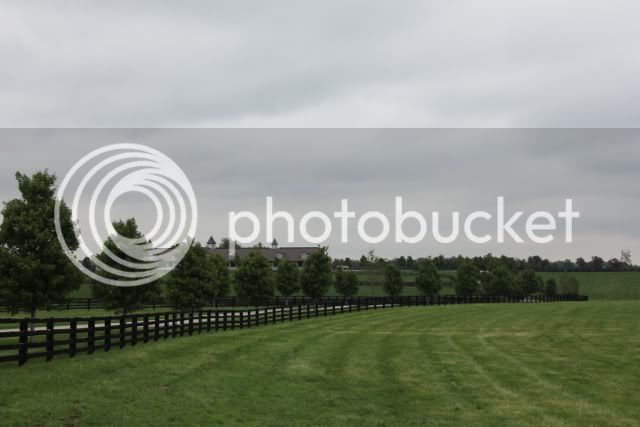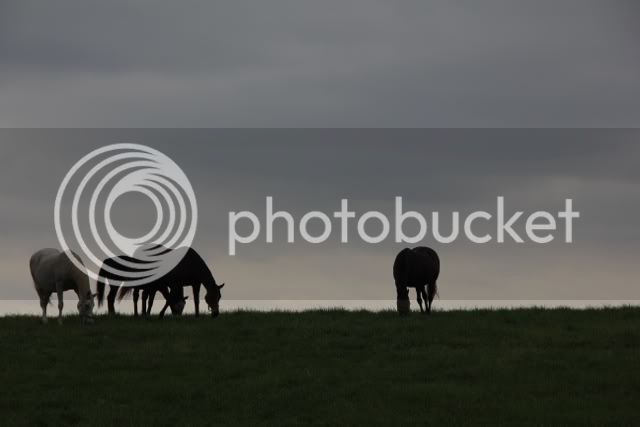From Williams, AZ to Hot Springs, Arkansas. (No pictures – there’s not much to make us stop. The destination is our be-all and end-all.)
Day 18 – Williams, AZ to Albuquerque, NM
It’s chilly when we wake up and our morning coffee has to wait while we pack our gear and load the bikes. Finally we’re ready to roll, but the morning sun feels warm on our faces and there is that desire for the morning cup of Joe.
A short drive from the campground and we pick up I-40 East. This highway will be our companion for several days. We roll through Flagstaff and the Coconino National Forest. The morning sun is dead foul in my eyes. Reflections in the windshields, bumpers and grills of cars and trucks flash on and off as we keep pace with the rest of the cars and trucks all heading somewhere to do something.
We pull off the highway at Winslow, Arizona for breakfast at Denny’s. Down the street I can see people travelling on the original, and HISTORIC, Route 66. Interesting to note that many of the exit signs on I-40 have historic signs telling drivers that there is access to the route. I’m thinking, “One of these days…” As I set the side stand down I can hear the Eagles on my iPod,
“…Well, I’m standing on a corner in Winslow, Arizona, I’m such a fine sight to see. There’s a girl, my Lord, in a flatbed Ford, slowing down to take a look at me.” Yeah, that’s Karma.
Exiting the Denny’s Lee sees a filling station across the backside of the parking lot. Nothing unusual about a filling station except this one is for vehicles powered by natural gas. It’s the first one either of us has seen for real. Lee takes a picture of it. It will be the only picture taken during this leg of our journey.
Our game plan is to ride for 100 miles and take a short break, walk around, stretch, visit a bathroom, etc. the next 100 miles means we need gas so we get a longer break. So far this plan works perfectly. Tomorrow will be a better test as we drive 560 miles from Albuquerque, NM to Norman, OK.
I have a love/hate relationship with my Garmin GPS. At times it is spot on with directions and current location. On other occasions it develops a cerebral infraction and just loses it. This is one of those occasions.
I exit according to the Garmin. It says, “Turn right.” I do so. I go a mile and it says, “Turn right.” Then it says, “Turn left and make a U-turn.” There is a large vacant parking lot to my left. A strip mall with most of the storefronts closed lies beyond the lot. Entering the lot, Lee contacts me on our intercom and tells me that his back teeth are floating and if he can’t find a restroom, a large tree or bush will have to suffice. There’s a dusty covered, eat-it-and-beat-it joint called the Wienerschnitzel Haus near the entrance to the parking area. The signs are faded and dust covered, but it looks open. Lee says he’s going there. I try to follow him, but my left leg gets a snarling dog cramp and I coast into the shade of a thinly leafed sapling with just enough strength to set the side stand and get off. I walk around until it goes away and start looking for Lee to come out of the Haus. I don’t see him. I try the intercom and get nothing. A few more minutes and I remount and ride around the Haus and don’t see him or his bike. Figuring he may have asked directions and missed me I rely on Garmin to take me to the KOA figuring he’s ahead of me. I get to the campground office and there’s no Lee. I ask at the desk and he hasn’t checked in, “Uh oh!”
I go outside and try the intercom again. No luck. My cell phone rings. It says it’s Lee. I answer and get nothing but static and an unintelligible roaring that might or might not be Lee’s voice. Whoever it is, sounds pissed. Lee hangs up. I call him back. For some strange reason our connection is clear.
“Where the Hell are you?” he asks.
“I’m at the KOA.”
“How come you didn’t stop for me?”
“I didn’t see you or your bike.”
“You went right by me.”
I tell him how to get to the KOA and in a few minutes I see him coming up the street as I stand on the sidewalk waving a red bandana.
As he tells it, he parked in the shade of a trailer and went inside the Haus to use the bathroom. After conducting his business he stopped at the counter and asked if the clerk could make a root beer float. Lee loves good root beer. He gets his float and figures it would be rude of him to come outside with just one float so he orders one for me. With two floats in hand he starts for the door just in time to see me ride by. Thinking I’m circling to park, he steps outside and waits. I never return. A grown man in riding gear sitting on a sidewalk with two root beer floats as his partner leaves him behind must be a mighty sad sight. Yep, he’s the original, redheaded, orphan child.
After hearing his side of the story and he hears mine I ask, “So, where’s my root beer float?”
“I left it on the sidewalk. It’s yours if you want to go back and get it.” I pass on that.
We unload what minimal gear we need for the night. Tomorrow we need an early start to cover 560 miles.
We’re both hungry, but too tired to remount and look for a restaurant. Thank God for local delivery. Pizzanine arrives with a deluxe deep-dish single pizza for Lee and an Italian sausage sandwich for me. There’s a 2-liter bottle of Pepsi and the service is kind enough to include two large cups filled with ice. There are no napkins. So it goes… That’s why Lee and I always take some from every restaurant we stop at. Maybe we could add them to our pin and bandana collection when we get home.
I’ve noticed that this KOA offers a Continental breakfast that begins at 7 AM. If we get up early enough we should be able to pack, grab something to eat and hit the road.
Day 19 – Albuquerque, NM to Norman, OK
We’re up before dawn. We shower and load the gear by 6:45. We wait a few minutes and walk to the Rec Center where we enjoy pancakes, coffee, juice and fresh fruit. There’s a television turned onto the CBS National Morning News. The cook says he doesn’t like to watch any of the controversial programs and switches to Good Morning America.
I haven’t paid too much attention to what’s been happening in the world, which is unusual since my wife and I are both news junkies. I see a surfer riding a wave while the silhouette of a shark lies is just beneath the surface and ahead of him. People are trapped on a thrill ride at Knott’s Berry Farm for several hours and one of the hosts at GMA is going in for a bone marrow transplant. Whew! For a minute I thought I might have missed something important.
We catch the local weather and head for the bikes and I-40 east. Since it’s rush hour and most people are inbound while we are outbound traffic in our lanes is relatively light. To our north the sun lights up Sandia Peak. There’s a cable car that takes visitors to the top (10,378 feet) where there’s an observation deck and a restaurant called, “High Finance.” Years ago, my wife and I had dinner there. One glance at the menu told us this place did not get its name from the elevation.
We stop in Tucumcari for gas. On my iPod I can hear Little Feat singing “Willin’.”
“I’ve been from Tucson to Tucumcari,
Tehachapi to Tonopah.
I’ve driven every kind of rig that’s ever been made.
I’ve driven the back roads so I wouldn’t get weighed.”
More karma.
Our trick for this ride is to look at it from the perspective of 100 miles chunks. It’s similar to the old adage of how to eat an elephant; one bite at a time. Five stops and then it’s just a 60-mile run to the campground, but Mr. Garmin has other plans in store for us.
We ride out of New Mexico and cross the panhandle of Texas with a gas stop in Amarillo with more Route 66 memorabilia.
We leave the panhandle and begin crossing Oklahoma where the, “…winds come rushing ‘cross the plains.” And they are some serious winds and wind gusts. Lee tells me that by sticking your leg or knee out you can counteract the crosswind. It works like the spoilers or flaps on an airplane’s wings. A wind from the right pushes the bike over to the left, stick the right knee out and it creates drag causing the bike to pull upright. It’s pretty slick.
As we near the outskirts of Oklahoma City we can see the large airfields for Tinker Air Force Base. We ride past one of the entrance gates and see a variety of aircraft on display, including a B-52. At this point my Garmin starts misbehaving.
Normally I can see the road map in the center of the display. The lower left corner has elevation. The lower right shows posted speed with my current speed. Upper right is a clock and upper left is distance to the next turn. A banner headline tells me either the road I am on or the road I will exit on to. Suddenly I have no map, just data. Lee’s Garmin, the same model as mine, a 660, shows everything. Since he’s behind me I ask for verbal cues.
Suddenly both of our Garmins go a little crazy. The purple arrow that shows our course starts twisting and turning saying, “go left. Go right. Make a U-turn.” It’s like the Mayhem character on the insurance commercials. The bottom display keeps telling us it’s recalculating. All of this happens while we’re riding on I-40 and intersecting with numerous bypasses and main arteries into Oklahoma City.
As suddenly as the behavior started, it stops and everything’s back to normal. We find our exit and less than two miles later we’re unloading our gear at the KOA cabin. As we drop our gear a young man approaches and starts talking with us. His name is Steve. He’s from England and with two other friends from Ireland is following the Mother Road. He invites us to join them after we’ve had a bite to eat.
Lee and I have a quick discussion about the cabin before setting out for dinner. My welcome email said this was a unique cabin with a half bath, air conditioning, heat and would sleep three. I assume it has a single bed on one wall and a double bunk bed on the other wall. I am, as usual, quite mistaken. Either that, or unprepared for the myriad ways that a simple cabin can be outfitted. This cabin has a queen-sized bed with a single bunk suspended over the inboard side. Very strange. I volunteer to take the top bunk, but Lee supersedes me. His argument is that if I have a nocturnal leg cramp in the top bunk, I might tumble out and fall on him; crushing him to death while he slept. He has a good point, so I don’t argue.
We head out to the intersection with I-40 for dinner at Wendy’s. I am trying to eat well-balanced meals, but sometime must revert to the primitive hunting and gathering lifestyle of my ancestors.
After parking the bikes we’re approached by a poorly dressed, gap-toothed and lanky character who tells us a hard luck story of being out of gas and could we spare five bucks so he could get home. Is it coincidental that he was standing outside the entrance to a liquor store when we rode up?
I tell him my basic lie that I have no cash, only a credit card. He admires our bikes and talks about friends who have owned bikes. Then he thanks me, wishes us a safe trip and returns to his lonely vigil outside the liquor store.
Lee and I have no problem entering the aforementioned store to purchase bourbon for tonight’s cocktail party. Lee gets the last bottle of Knob Creek and I try a bottle of Silver Eagle. It’s a small liquor store and most of the brands they stock would make a cheap bar blush with embarrassment.
Back at the cabin we take off the riding gear and with bottles in hand walk over to our host’s campsite. They have a thirty-foot Class C rental and are quietly sitting at a picnic table finishing their evening meal. What followed afterward is a bit hazy, but it was, as Lee would say, “A hoot.”
The two Irishmen are Barry and Damien. Damien and Steve are commercial pilots for an English airline that services most of Europe. Sorry, but I can’t recall the name. Lee mentions that neither one looks old enough to be a pilots. I ask if they have notes from their mothers saying it’s okay for them to fly. They’re all in their early thirties.
Our evening discussion revolves around flying, politics, why Route 66 is such a magnet and health care. I congratulate Steve for Britain’s win of the Tour de France with Bradley Wiggins. Lee asks Damien a question and the reply is, “That’s the way we roll in Ireland!” Barry shows a video on his smart phone of them making pizza in the gas oven while driving along the Interstate at 75 mph.
“Isn’t that dangerous?”
“Only if the driver is the one doing the cooking.”
Damien talks about the tire that blew out and damaged the floor of the RV. Steve talks about driving down Route 66 when suddenly the pavement ended and the Route became stone, gravel and dust. The procedure of making a three-point turn was accomplished with about sixteen separate moves.
Barry goes inside the RV to sleep. Lee cashes in his chips and Steve, Damien and I stay up until 1:30 talking, telling stories and generally having a great time, not to mention putting a hurt on the bourbon and beer. I make some recommendations of what to see as they head west on Route 66, Las Vegas and California. They return the favor by telling me about sites to visit in England and Ireland. I finally bid them a good night and head for the cabin; Lee is sound asleep in the upper bunk.
In the morning as we pack we are met by Damien and Steve who have been out for a run. I look and feel as though I’ve been hit with a family-sized can of “Whup-ass.” I have a slight, nagging headache and my nose is sunburned. These two looks as though they’re refreshed and ready to take on the world. Yep! That’s the way they roll.
While lee takes a shower the threesome drive by in the RV. I shake hands, thank them for a wonderful evening and wish them safe passage. I regret not getting their addresses.
We are almost finished loading the bikes when Lee asks me what time it is. My watch is wrong so I check the clock on the cell phone. It’s latter than we think. We’re back on central time and during our run yesterday, we lost an hour.
Time zones have been a bit confusing for us. It’s even more confusing because Arizona does not do standard or daylight savings time. If you’re in Williams, you’re on Central time while all the other states in that zone are an hour behind. I walk up to the office and explain that we will be late checking out due to this factor. The lady behind the desk says it’s no problem since there aren’t that many guests checking in today.
Day 20 to Hot Springs, Arkansas.
Once again we rejoin our good friend I-40 and head east. It’s hot and dry, 94 degrees. Large signs along the highway inform us that there’s a statewide ban on open fires. Recent rains have turned the prairie grass green, but the soil beneath is bone dry and dusty.
Compared to yesterday, today’s 322 miles, as my friend Ray would say, “Ain’t nothin’ but a thang!” 200 miles of four-lane Interstate and we drive into Fort Smith, Arkansas. From here it will be two lane highways to Hot Springs.
We now have to reacquaint ourselves to actually leaning the bikes into curves and bends in the road. The flat plains have been replaced with the Ozark and Ouachita Mountains. It was 97 in Fort Smith, at one point as we drop into green, shady valleys with tree-lined roads I glance at the thermometer on the display; it’s 77 degrees. Very refreshing.
The scenery reminds me of the hills and mountains of Pennsylvania, but they aren’t quite the same. The long parallel ridges and valleys are missing here. I wonder why I’ve never ventured into this state before. The roads are well kept and there are passing lanes on most of the climbs.
Once upon a time an independent trucking publication ranked Pennsylvania 49th out of 50 for having the worst roads in the U.S. Arkansas was dead last. I called our tourist bureau in Harrisburg and told them I had a great idea for a bumper sticker, “Pennsylvania! If you think our roads are bad; thank God you aren’t in Arkansas!” They hung up on me.
We check into our cabin at the Hot Springs KOA. This is a studio with a queen-sized bed and a fold out futon beneath a bunk bed. There’s a small, two-burner kitchen with microwave, tiny refrigerator, a toaster and a two-cup coffee maker. The bathroom has a toilet and shower stall. The bathroom sink is set against the wall outside the bathroom door. Outside there’s a small deck with a porch swing. In front is a small picnic table next to a fire ring and a gravel parking area.
People in Arkansas must be taller than the average American. The counter for the bathroom sink is higher than my waist. Sitting on the porch swing, my feet don’t touch the deck. However, the rocking, swivel lounge chair in this cabin is extremely comfortable. But after riding 1100 miles in three days, a plywood bench would probably feel pretty good. I realize there are those riders who can knock off a thousand miles in less than 24 hours. They belong to the Iron Butt Association. Since Lee and I did just over half that distance, I suppose we might qualify for the aluminum foil butt association. Or maybe it’s corrugated cardboard.
We head back into town for a grocery and beer run. As luck would have it, Arkansas allows beer and wine to be sold at grocery stores. As our luck would have it, we visit the only grocery store in the entire city that does not sell beer or wine.
We buy some provisions and head back. We stop at a convenience store that sells fried chicken, beer, wine and has gas pumps. Lee buys gas and I buy beer. But the place is packed and there are all sorts of problems. The only cashier makes a mistake while charging a customer and the manager has to make the corrections. There is an incredible amount of heat coming from the fryers and the door opening to the outside. Lee’s pump refuses to print a receipt and he has to come inside. Sweat is pouring down my brow and my once cold beer is now approaching room temperature. There’s a sign over the cold room where the beer is kept. It announces that this is the coldest beer in Arkansas; it’s kept at 28 degrees. It will be nowhere near that temperature by the time you pay for it.
Back at the cabin I enjoy a couple of beers, tepid, but chilling in the refrigerator, while Lee does laundry. I work on the journal trying to get caught up. Lee returns with clean laundry and suggests we have a slob day and go into town for a full spa treatment. He’s been doing some research online and has found a place called the Buckstaff Bathhouse. Sounds like a plan to me.
Lee and I stayed up until 1:45 AM talking and working on our pictures and journals. Without setting the alarm I awoke at 8 AM, got dressed and headed to the laundry room toting two stuff sacks, a bottle of detergent and my laptop. Lady Luck smiled and said, “Have a nice day.” There was no one else in the room so I grabbed two washers, loaded the clothes, detergent and slammed 6 quarters into each machine.
Adjacent to this room is the game room with pinball machines, air hickey and a pool table. It was vacant so I grabbed a chair and sat down at a round table and pounded pout the past missives while the clothes lost their accumulation of dirt, grease dust and sweat.
It took two full cycles in the dryer to dry my clothes. That was fine with me because I finished the Grand Canyon dispatches and had started the episode of driving from Arizona to Arkansas.
Lee is waiting for me when I return and in a few minutes were riding into the historic district of Hot Springs where wee locate the Buckstaff Bathhouse and a place to park. We have been told to arrive early since it’s a weekend and these places can get pretty crowded. We enter the building at a little after noon. A sign says they open at 1:30 and won’t sell tickets until 1:15. Outside on a large veranda are a number of Adirondack chairs where visitors are sitting. Apparently that’s all there doing. There’s a line of four women in front of us inside sitting on overstuffed lounge chairs. I take a vacant seat and read while Lee entertains the ladies with tales of our adventures.
Finally they remove the closed sign and start processing the guests. Lee and I choose the standard package: whirlpool, loofah mitt, sitz bath, steam room, needle shower, hot towels and a massage. After 21 days on the roads of America we are really looking for this.
We pay and are directed to a door labeled, “Men’s Locker Room.” Through those doors an attendant wearing a white polo shirt a slacks directs us to curtained stalls that have vertical lockers such as one would find in any gym. From the lock of each locker hangs a key with a wristband. We are told to strip, place our clothes in the locker, put the key on our wrist and step back outside. He hands us white bed sheets. A few minutes later, Lee and I step out dressed as Roman senators without the laurel wreaths. Cameras and cell phones are not permitted beyond this point.
We leave the dressing room and enter the main bathroom. A large tiled room that might be a hundred feet square. There are cushioned tables in the center of the room. Along each wall are various stations of hydrotherapeutic devices that would make the Spanish Inquisition envious. Or maybe the CIA. I see no evidence of waterboarding and have no desire to give them any ideas. Actually, I’m looking forward to this experience.
Our new attendant introduces himself as Bobby and asks for our names. We give him our names and he repeats them, but it’s really pointless for the next hour and a half he’ll call us either “Buddy” or, “Young man.”
Bobby is an older African American. Thin and wiry with a wrinkled face with a few missing teeth in front he wouldn’t look out of place standing outside the corner of a boxing ring with a Q-tip coated with Vaseline tucked behind his ear, a towel draped over his shoulder and a three-legged stool in one hand; yelling encouragement to his champ, “Keep your guard up! Jab! Jab! Duck! Bob! Weave!”
Our first stop is the whirlpool bath. Each chamber contains one tub. Lee goes to his and then Bobby escorts me to mine. It’s an oversized porcelain tub with a Waring blender mounted at one end. A large pipe pours hot water into the tub until it’s almost full. The temperature is set at 100 degrees. I’ve read that the natural temperature of the hot springs is 143 degrees.
Bobby tells me to get all the way in and then sit back as he places a loofa mitt behind my head so I can lean back against the tub’s edge. He hands me two small glasses of water that he’s filled from the main tap and tells me to drink them for my health. I sit and relax as turbulent waters swirl and bubble around me. Every now and then Bobby stops by asking, “How ya doing young man?” Or, “Is everything all right, buddy?”
After twenty minutes we are then taken to the sitz baths. Again, these are in separate stalls. Imagine a large, porcelain laundry sink placed on the floor. You sit in this with your knees tucked up and your feet on the floor.
“This is good for your tailbones.” Bobby tells us. He shows us how to add hot or cold water and how to use the drain. The technique is to fill the tub with water as hot as you can stand and then close the tap. When the water cools off, open the drain and close it when the level drops then add more hot water. Repeat this process until Bobby says it’s time to move on.
Our next stop is the sauna. Lee and I sit side by side in a steam room not much bigger than a double phone booth. Sitting on our towels on a wooden bench I joke with Lee about looking like gangsters of the thirties discussing a hit or gang take over. In no time our pores are open and sweat runs down our faces, arms and legs.
I’ve been told that at the South Pole there are personnel who belong to the 300 Club. They sit in a sauna set at 200 degrees and then run outside and roll in the snow when the air temperature is 100 degrees below zero! They say the sensation of the skin’s pores slamming shut is quite exciting, almost erotic. I’ll pass.
We have no birch branches to beat ourselves or snow banks to roll in so Bobby takes us to the needle shower. This is an over-sized shower stall with numerous vertical pipes running up and down on each wall. Thin, streams of hot water attack your body while overhead a large showerhead dispenses more hot water on your head. This lasts a few minutes.
The next stop is to lie face down on a cushioned table while Bobby places hot, moist towels on your aching muscles. Lee and I both ask for the lower back and shoulders. Bobby places the towels and then wraps us up in a sheet that covers the pad we are lying on. I now realize how pigs must feel at a luau wrapped in palm leaves and buried in a pit with red-hot stones and then buried with sand. Where’s the apple for my mouth?
After almost ten minutes Bobby unwraps us and takes us to another chamber for our massages. Lee goes first while I wait in the Cooling Room with a sheet as a toga trying to read a year old copy of Time Magazine without my reading glasses. It takes me almost 15 minutes to read a one-page interview with one of the designer’s of Watson, the IMB computer that played on Jeopardy.
Finally it’s my turn and my massage therapist introduces himself. Coincidentally his name is also, Lee. He gives full body massage working on my legs, arms and back. As he works the final knots out of my body I learn that he is originally from Romania. When he lived there he rode an R75 BMW. He talks about his love and respect for the Boxer engine.
He also reminds me to drink plenty of water when I leave. “You may not realize it, but you’ve lost a lot of water while you’ve been here.” Ironic when one considers how much time I’ve been in water. And yes, for once I did enjoy being in hot water.
After twenty minutes he finishes, I thank him and shake his hand. He directs me to the locker room where I get dressed and enter the lobby is waiting. “There are 206 bones in the human body,” I tell him. “But right now I don’t have any.” How are we ever going to get our bikes upright when our legs feel like jelly?
Somehow we manage and stop for take out chicken and make it back to our cabin for a late lunch/early dinner. Over an hour and a half of spa treatment for 64 bucks; that’s hard to beat.
I thank President Andrew Jackson and our government who set Hot Springs aside as an area for recreation. This precedes the Antiquities and Preservation Act by almost 100 years. In 1921 this section of Hot Springs became a National Park. That’s quite a change from the parks we’ve seen in the past three weeks: canyons, deserts arches and mountains and now, hot springs. Yeah, America’s greatest idea and they got it right.
This morning I read that President Obama and a bipartisan Congress set aside several thousand acres in Colorado as a new national monument – Chimney Rock. Tomorrow I’ll hate Congress as much as I ever have, but today I’ll drink to their health and offer my thanks.
I also drink to the health of you, my faithful readers. Oh yeah, where are the pictures? Here you go.
The Buckstaff Bathhouse first open in 1912 and is celebrating their centennial.
Some of the spas on Bathhouse Row in the historic district.
Park Headquarters.
There are several fountains near the headquarters. The water is warm and tainted with minerals. Prosit!
